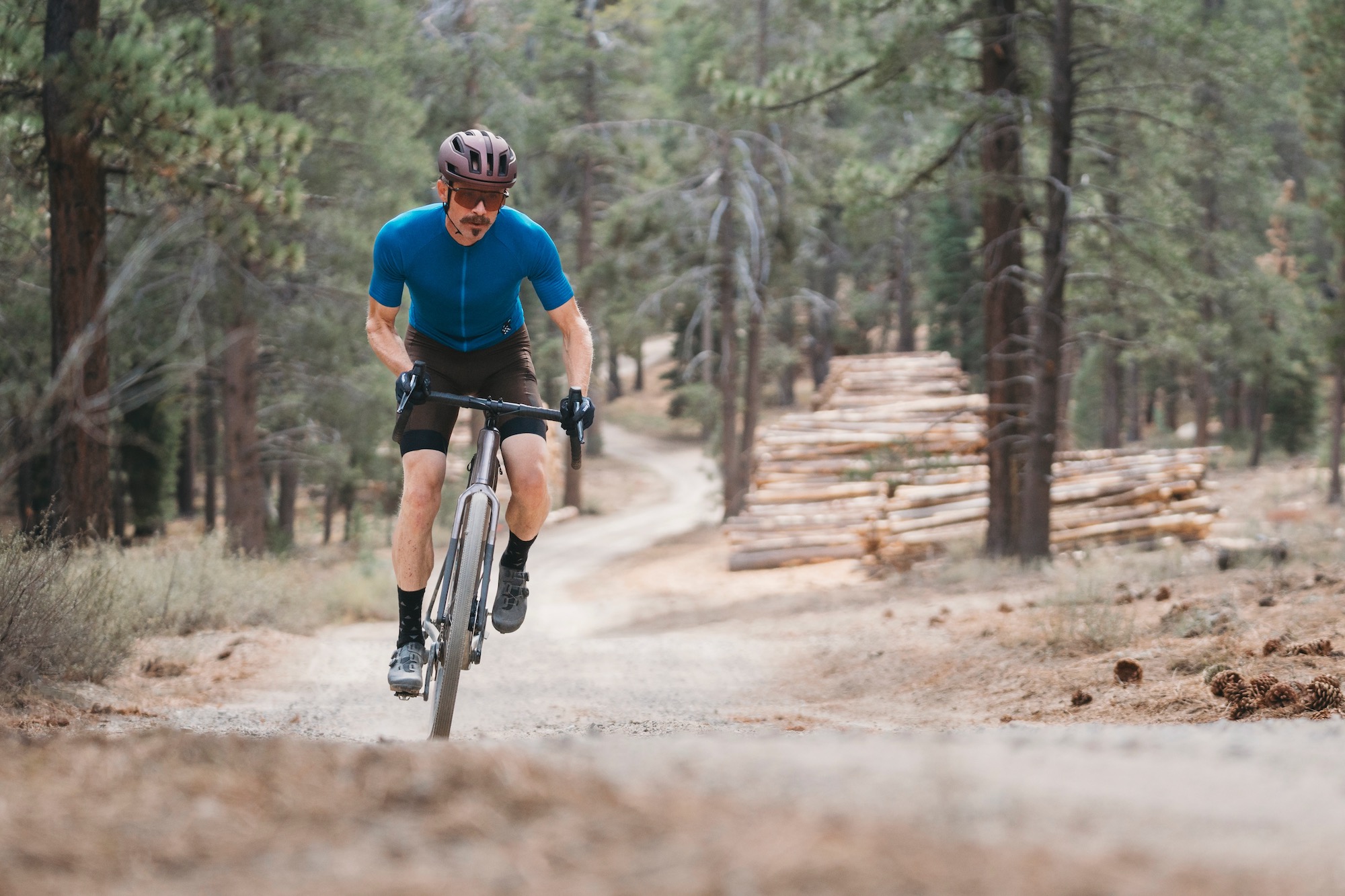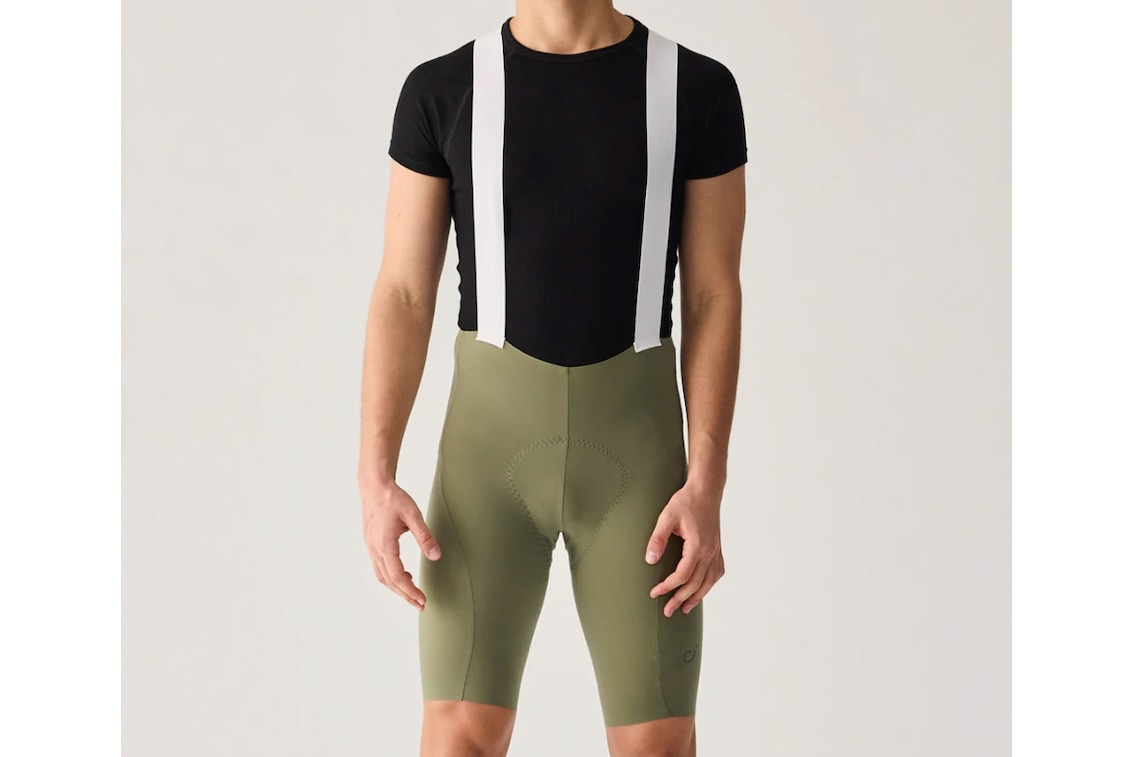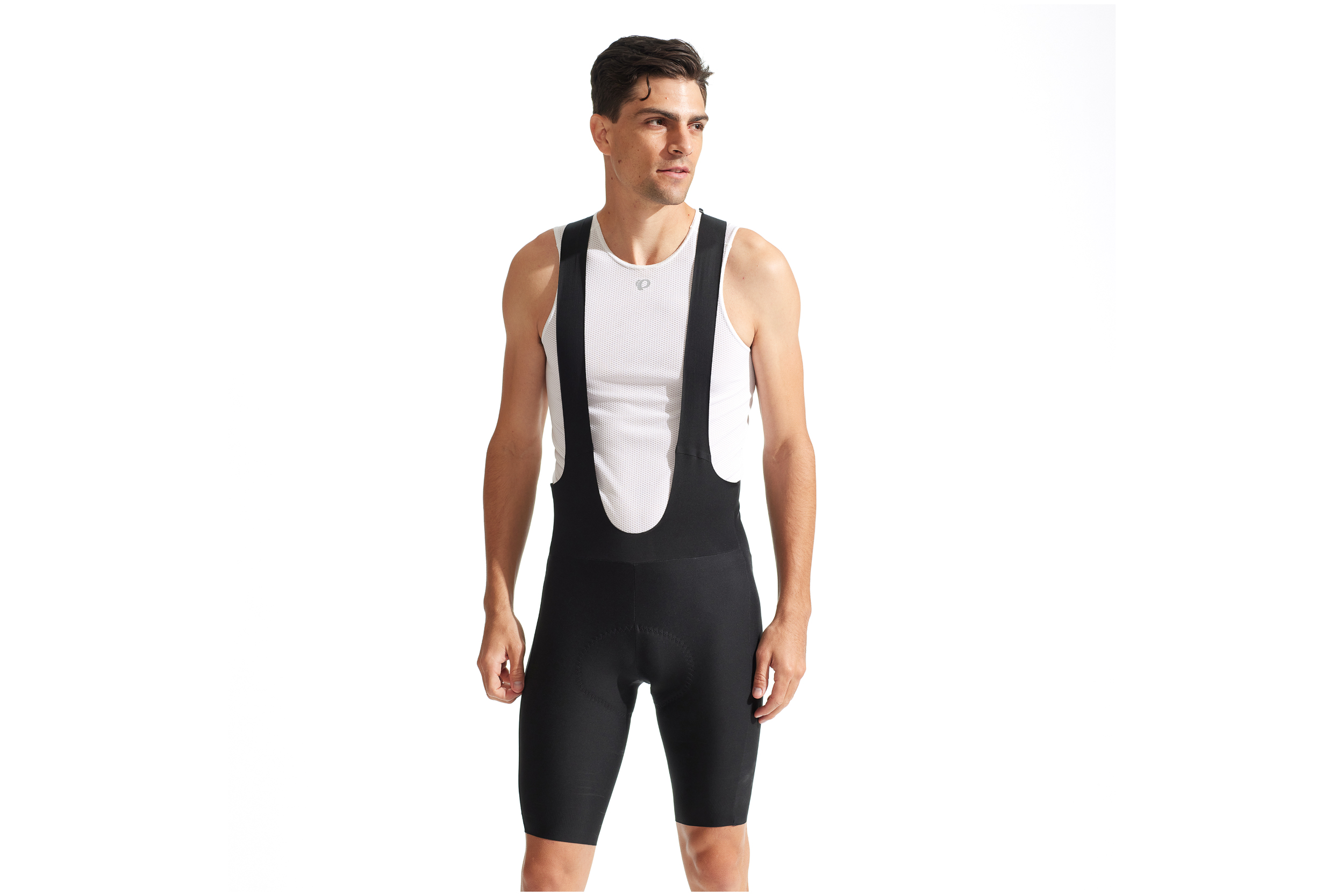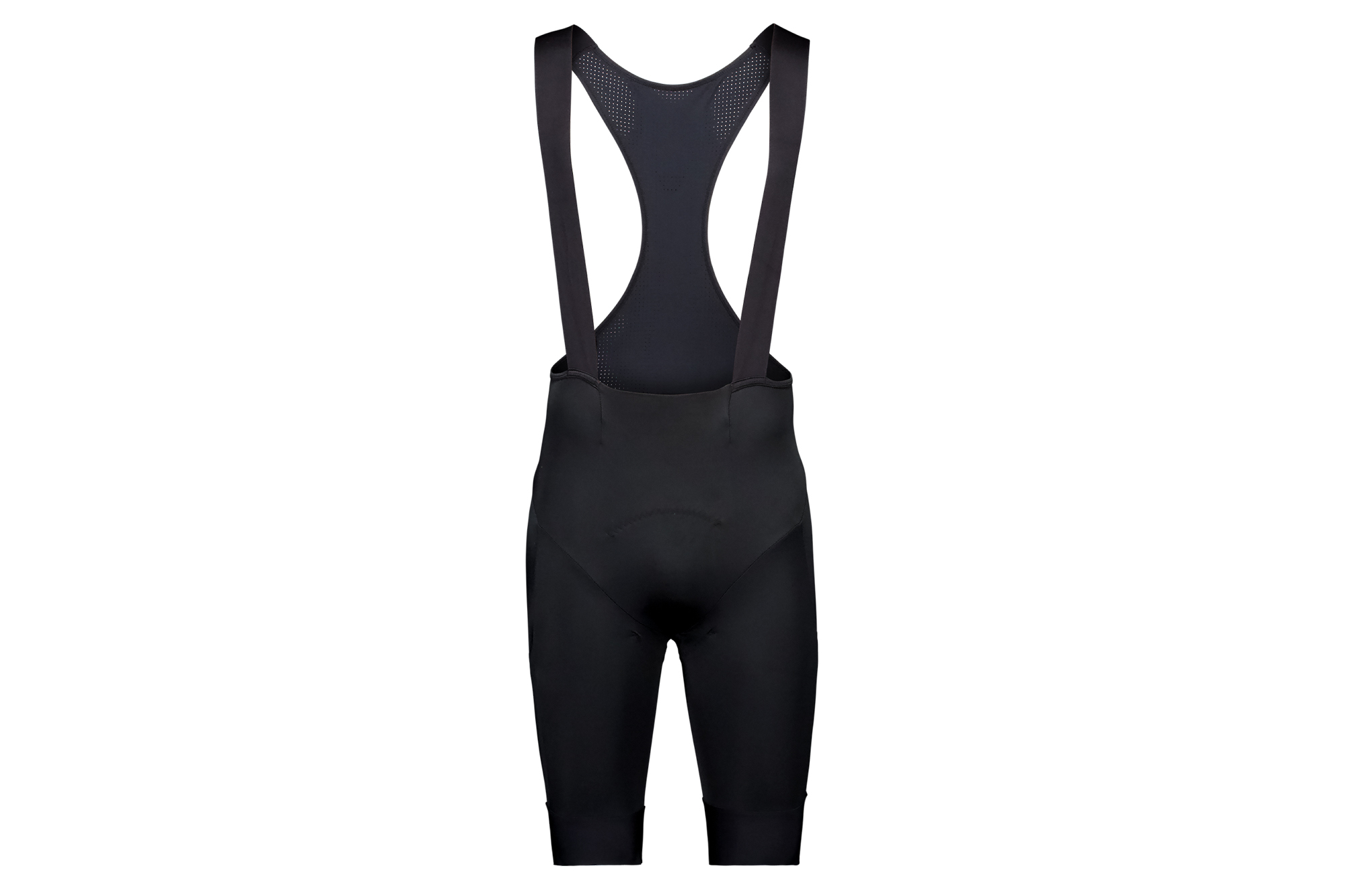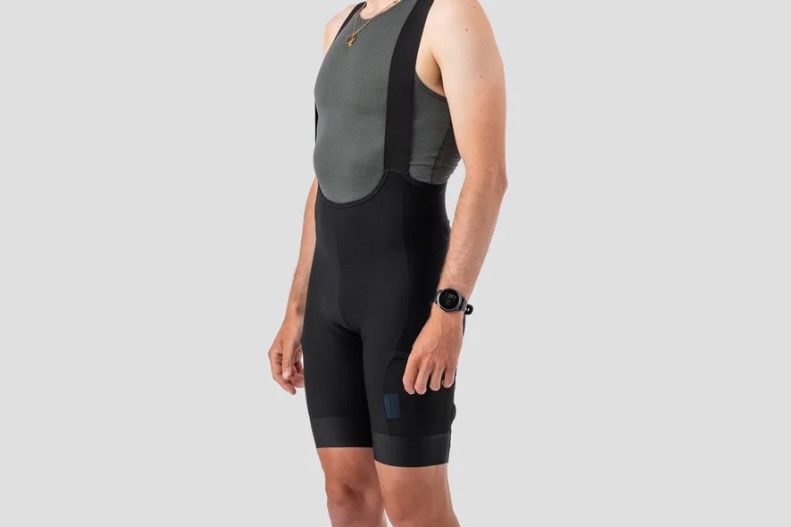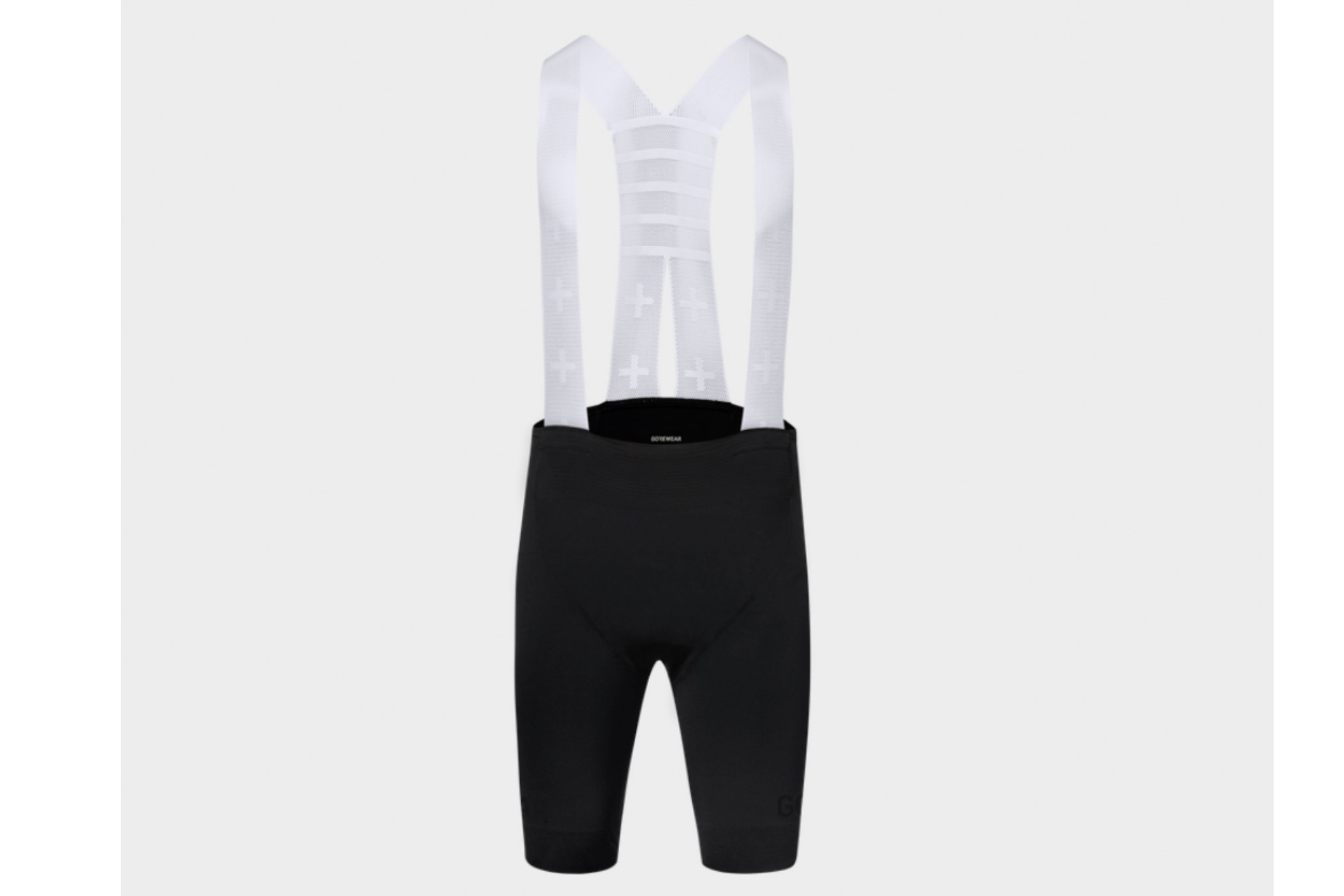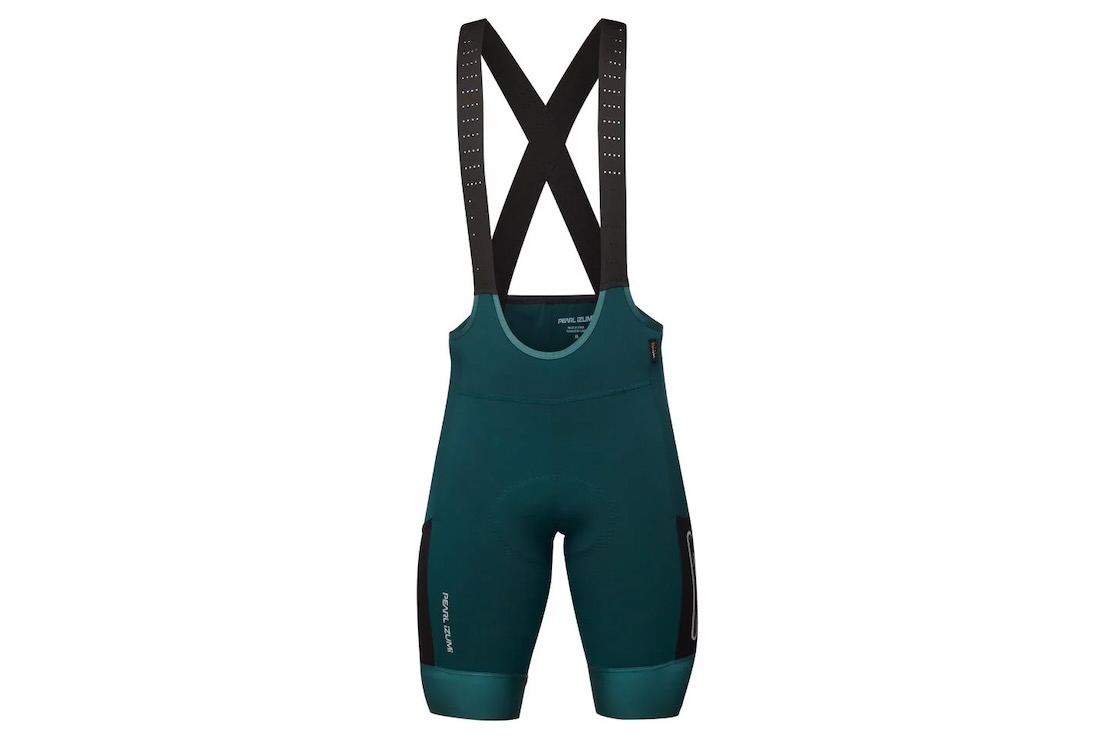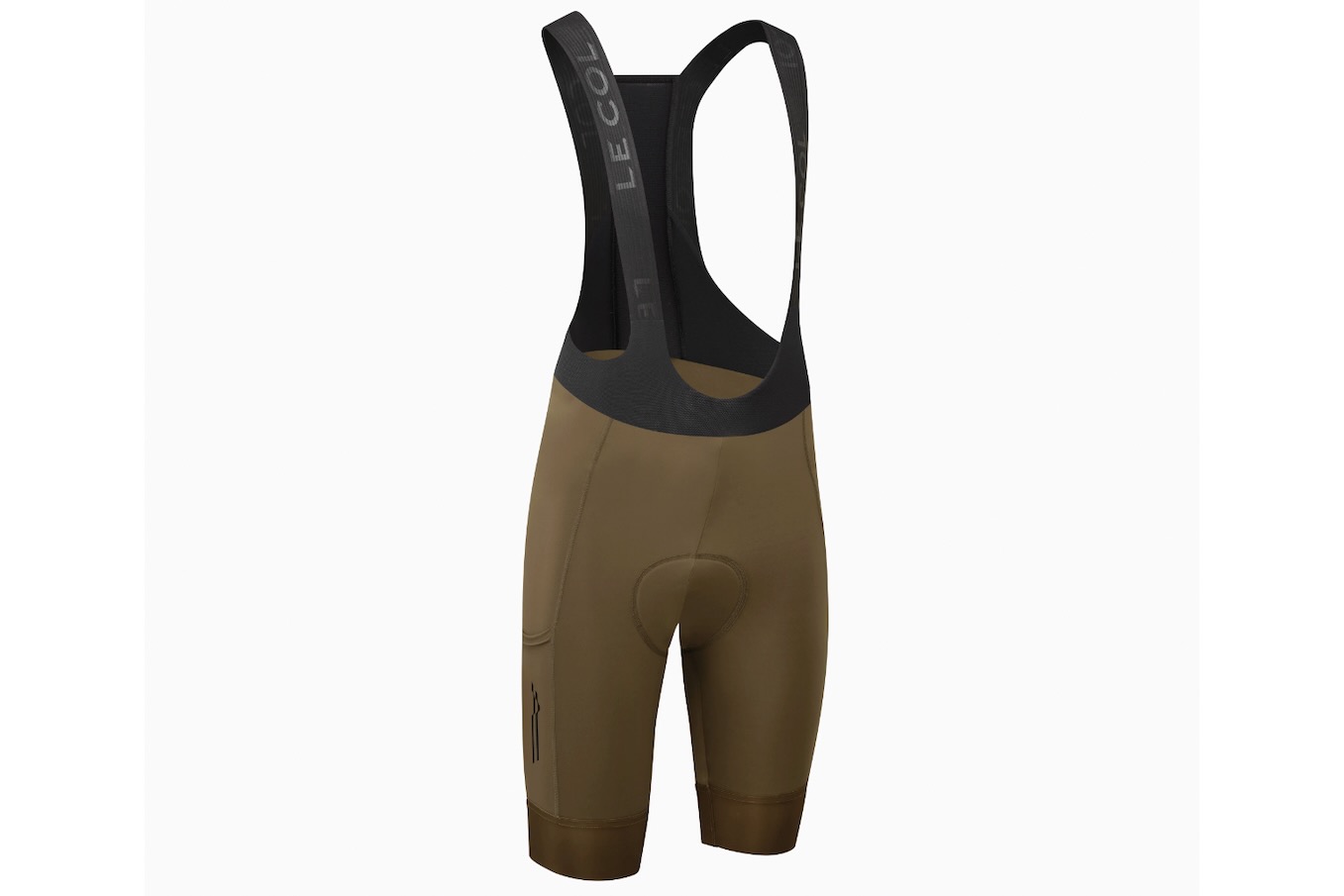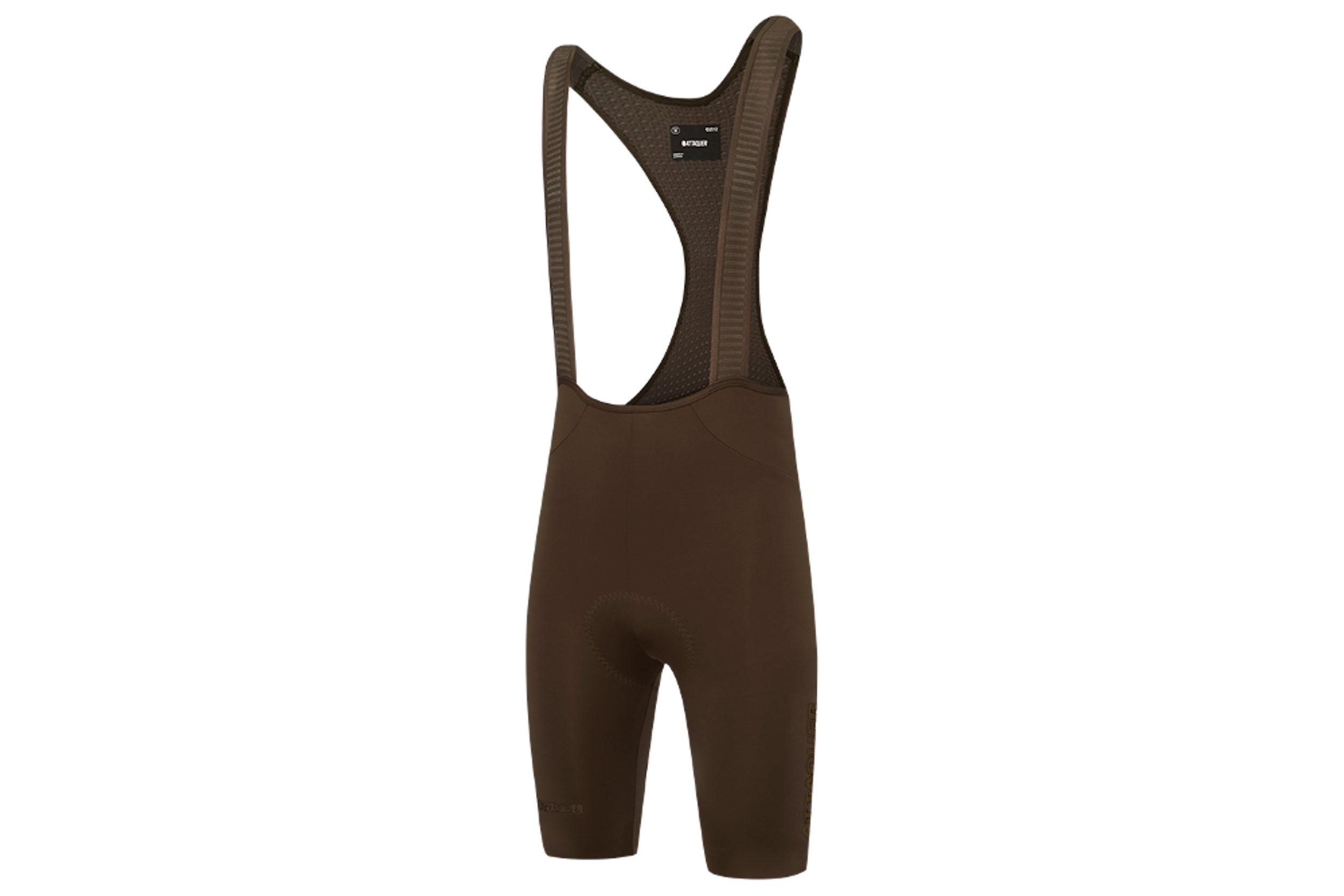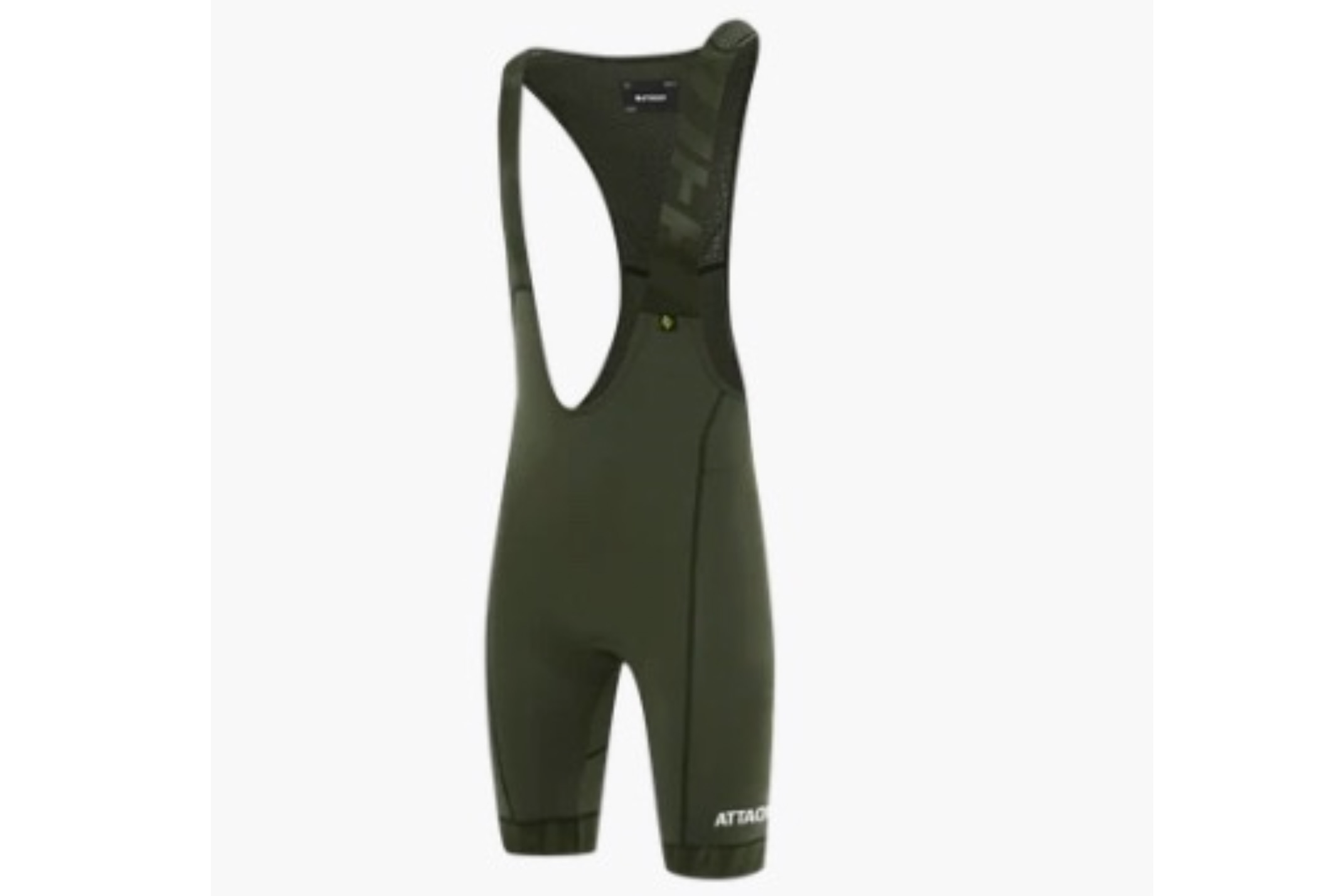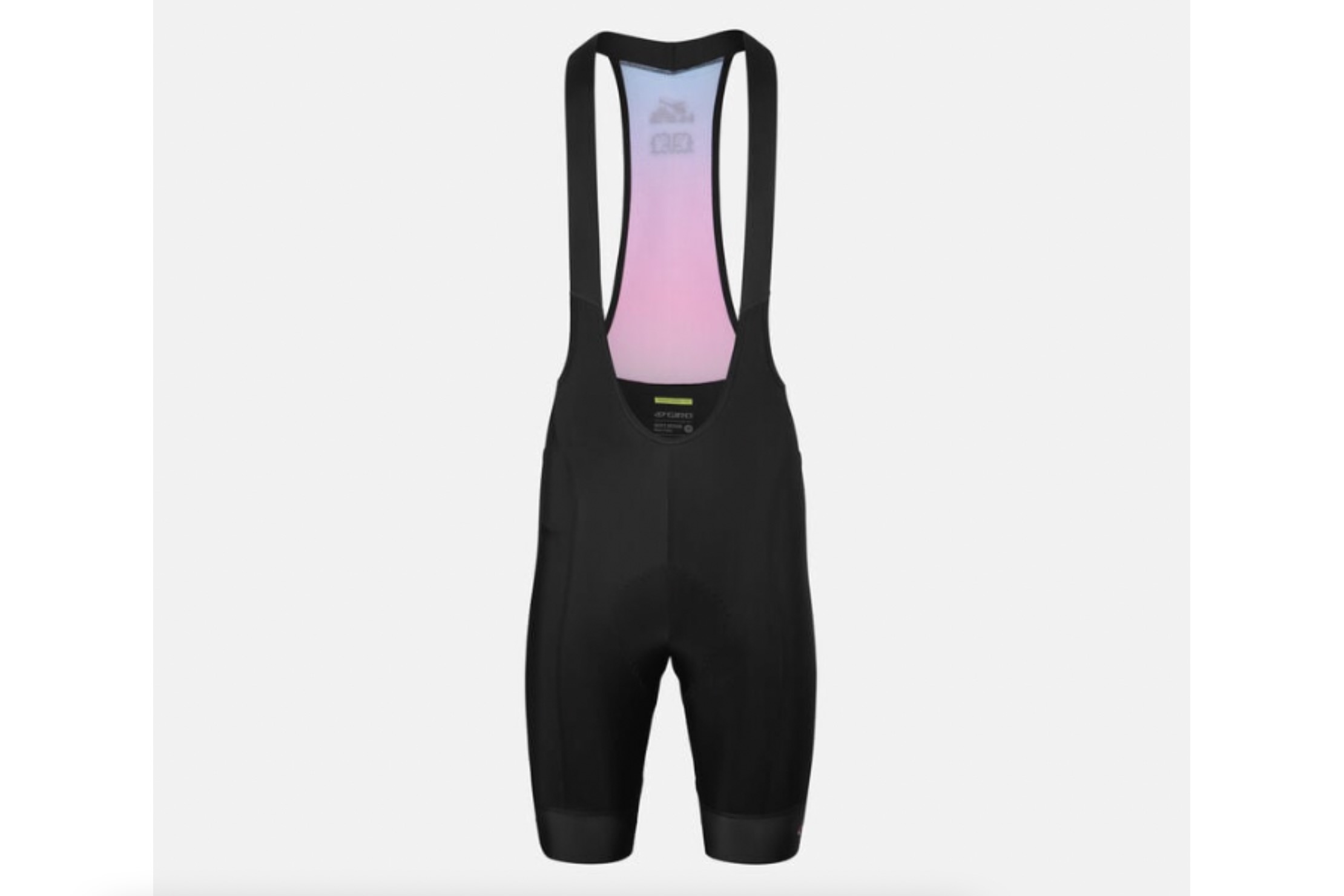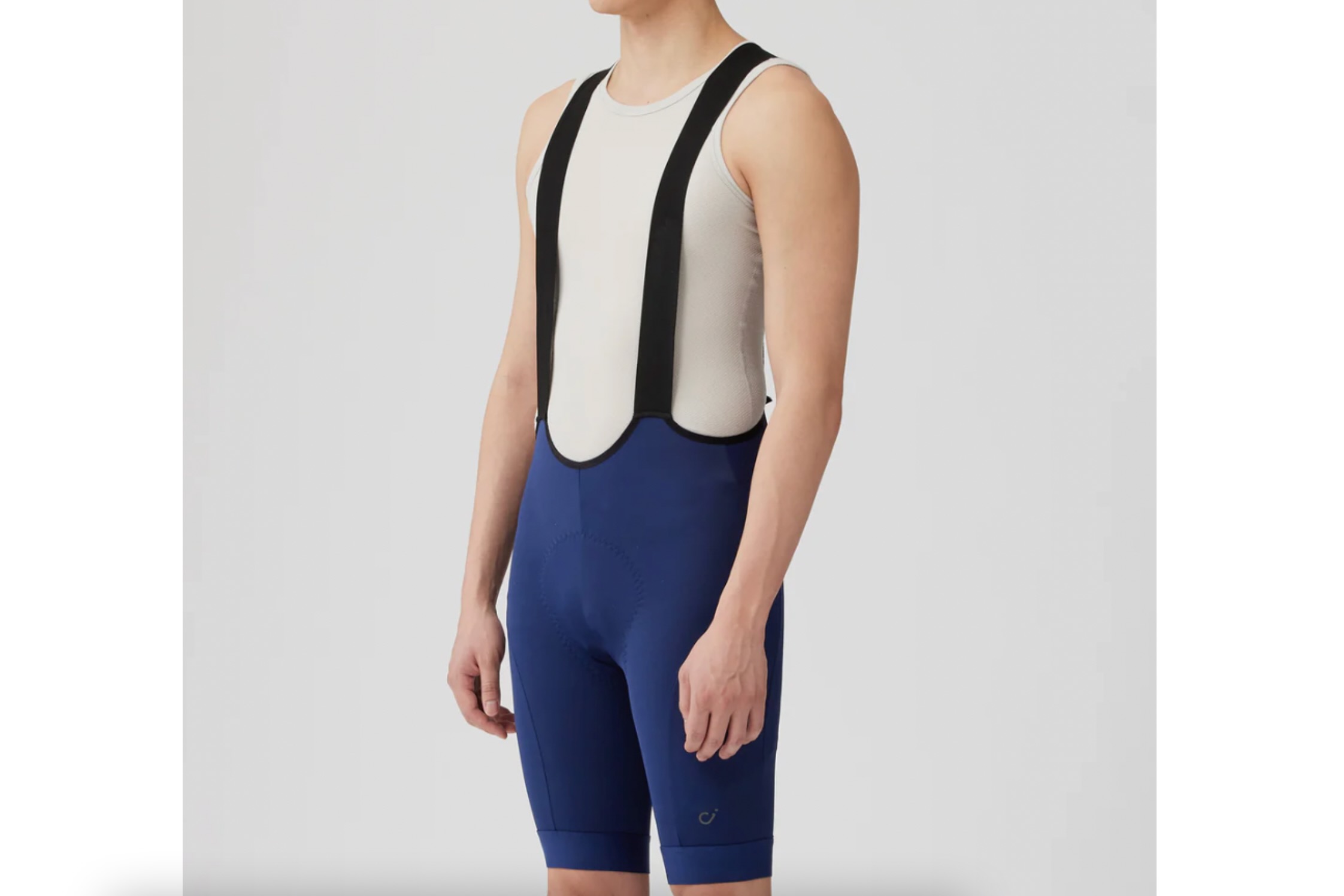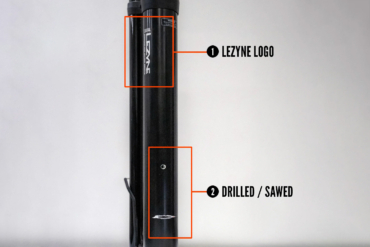The right cycling bibs are the foundation of comfort on the bike. Serving as the critical interface between our bodies and our bike saddles, the best cycling bibs can enhance your comfort, performance, and enjoyment on every ride.
With more brands and models to choose from than ever before, finding the right pair of cycling bibs can be surprisingly challenging. With different materials, designs, chamois/seat pads, cargo pockets, etc., there’s a lot to consider when searching for your perfect match.
To help, our crew of gravel and road cycling experts shouldered over two dozen pairs of men’s cycling bibs to find the best available in 2025. Our team of testers spent thousands of hours riding in this selection of 14 bibs to bring you this curated list of the best options on the market.
From smooth tarmac and pristine gravel to rough, rutted fire roads in Texas, California, Idaho, and the Pacific Northwest, each model was put through its paces while evaluating its fit, comfort, materials, pads, and performance in the real world. Below, you’ll find our recommendations with options ranging from the top-rated Velocio LUXE to the budget-friendly Pearl Izumi Quest, and everything in between.
Editor’s Note: We updated this guide on May 12, 2025, with several new models, including the high-end Le Col ARC Cargo Bibs, the mid-range POC Cadence Cargo Cycling Bib Shorts, and the impressively durable Pearl Izumi Expedition PRO.
The Best Cycling Bibs of 2025
Velocio LUXE Bib Shorts
-
Value
7.2
-
Durability
8.3
-
Comfort
9.2
- Materials: Compression Lycra: 57% recycled polyamide, 43% elastane
- Chamois: Velocio long-distance chamois by Cytech
- Available Colors: Deep lichen, black, black olive, sulphur
- Available Sizes: XS, S, M, L, XL, XXL, XXXL, XXXXL
Pros
- Top-notch compression fit
- Effective anti-chafing design
- Large size range
Cons
- Not the most breathable
- Expensive
Pearl Izumi Quest Bib Shorts
-
Value
8.0
-
Durability
6.6
-
Comfort
7.1
- Materials: 77% recycled polyester, 14% elastane, 9% polyester
- Chamois: Pearl Izumi Levitate
- Available Colors: Black, twilight
- Available Sizes: S, M, L, XL, XXL
Pros
- Great price, still has quality construction
- Very comfortable chamois regardless of price
- Fabric breathes well
Cons
- Low compression might not be for some
- Lighter feeling fabric might not be as durable as others against punctures and abrasion
POC Cadence Cargo Bib Shorts
-
Value
7.7
-
Durability
8.5
-
Comfort
9.1
- Material: Nylon and elastane blend
- Chamois: Patent-pending POC Novus with gel inserts
- Available colors: Apatite Navy, Uranium Black
- Available sizes: XS, S, M, L, XL, XXL
Pros
- Very comfortable, well shaped chamois
- Fabric feels light without being too thin
- Moderate price for a premium bib short
Cons
- Develops a horizontal fold above the pad in the front while riding in an aggressive position
Ornot Men’s Cargo Bib Short
-
Value
7.6
-
Durability
8.5
-
Comfort
9.0
- Material: 63% polyamide, 37% elastane, Oeko-Tex certified
- Chamois: High-density endurance pad made with recycled fibers
- Available colors: Black, midnight blue, olive
- Available sizes: XS, S, M, L, XL, XXL
Pros
- Moderate price point
- 4 pockets easy access pockets for storage
- Comfortable straps and leg grippers
- Perfect level of compression
- Dense pad provides all day comfort
Cons
- Material isn't the quickest drying
- A little material puckering around the chamois seam
Gorewear Ultimate Bib Shorts+ Mens
-
Value
7.1
-
Durability
7.8
-
Comfort
9.1
- Material: 79% polamide, 21% elastane
- Chamois: Expert N3X 3D-printed sat pad with Gorewear cup
- Available colors: Black
- Available sizes: XS, S, M, L, XL
Pros
- 3D-printed seat pad is exceptionally comfortable
- Excellent breathability of main body fabric and straps
- Material is thin but surprisingly robust
- Good compression
- Great fit
Cons
- Fairly expensive
- Black is the only color option
Velocio Ultralight Bib Short
-
Value
7.4
-
Durability
7.1
-
Comfort
8.8
- Materials: 71% polyamide, 29% elastane
- Chamois: Velocio lightweight chamois
- Available Colors: Navy, black
- Available Sizes: XS, S, M, L, XL, XXL, XXXL, XXXXL
Pros
- Thin and light fabric is breathable and feels cool, but remains opaque
- Soft and comfortable chamois
- Comfortable straps
- Crossed straps work well in keeping bibs stable
Cons
- Lighter fabric may not be as durable or crash-resistant
- A bit pricey
Pearl Izumi Expedition PRO Bibs
-
Value
7.6
-
Durability
9.0
-
Comfort
8.4
- Material: 72% CORDURA nylon, 28% elastane
- Chamois: Triple Density PRO Levitate 3D chamois
- Available colors: Black, dark navy, dark sea
- Available sizes: S, M, L, XL, XXL
Pros
- Super durable material
- Excellent chamois
- Great pockets
- Exceptionally comfortable straps and leg grippers
Cons
- Expensive
- CORDURA isn't as soft and doesn't breathe as well as other materials
More Cycling Bibs We Tested
-
Value
6.8
-
Durability
8.6
-
Comfort
9.2
- Material: Powerweave: 71% Nylon, 29% Elastane
- Chamois: 5 mm elite-level race pad
- Available Colors: Black,
- Available Sizes: XS, S, M, L, XL, XXL,
Pros
- Perfect balance of breathability and compression
- Excellent pad performance
- Clean fit
- Lightweight
Cons
- Very expensive
-
Value
7.1
-
Durability
8.8
-
Comfort
8.9
- Material: 62% polyamide, 38% elastane
- Chamois: Multi-terrain performance chamois
- Available colors: Black, gray, olive
- Available sizes: XS, S, M, L, XL, XXL, XXXL
Pros
- Super comfortable
- Great cargo pockets
- Breathable and quick-drying
- Nicely shaped and cushioned chamois
- Low-key branding
Cons
- Premium price tag
- Minimal compression
-
Value
7.4
-
Durability
8.5
-
Comfort
8.4
- Material: 71% polyamide and 29% elastane
- Chamois: Attaquer Race
- Available Colors: Black, emerald, purple, solar orange
- Available Sizes: XS, S, M, L, XL, XXL
Pros
- Compressive, race-oriented fit
- Race chamois well suited to more aggressive body positions
- Fabric, seamless leg panels, and chamois felt luxurious against skin
- Many colors available and being pre-dyed, they are deep and rich
- Crash replacement policy
Cons
- Race-oriented fit and chamois is less ideal for all-around riding
-
Value
7.1
-
Durability
8.5
-
Comfort
8.8
- Material: 100% Recycled Nylon, Oeko-Tex approved
- Chamois: Signature, high-density, two-piece chamois
- Available colors: Aubergine, Orange, Smoke, Navy, Pine, Black/White
- Available sizes: XS, S, M, L, XL, XXL
Pros
- Excellent pad comfort
- High-quality construction
- Great fit
Cons
- Dense straps are better with a base layer than without
- Material: Renew series 80% recycled nylon; 20% elastane Bluesign-approved fabric
- Chamois: 4 density elastic interface, 14 mm thick
- Available colors: Black, black data mosh, black mica, Andrew Jackson
- Available sizes: S, M, L, XL, XXL, XXXL
Pros
- Comfortable straps
- Excellent ventilation
- 80% recycled material
- Moderate price
Cons
- Good all-around but not a standout
- Material: 78% Polyamide; 22% Nylon. All recycled Bluesign-approved fabric
- Chamois: Proprietary Signature chamois by Cytech EIT
- Available colors: Black, Pine, Navy
- Available sizes: XS, S, M, L, XL, XXL, XXXL, XXXXL
Pros
- Excellent pad comfort
- Perfect fit
- 100% Recycled material
Cons
- Moderately expensive
- Materials: 80% recycled nylon, 20% recycled elastane
- Chamois: Single density Body Geometry 3D chamois
- Available colors: Black, dark navy, garnet red, dark moss green
- Available Sizes: XS, S, M, L, XL, XXL
Pros
- Affordable
- Minimal branding, subdued styling
- Construction and material quality are high for the price
- Made with recycled materials
Cons
- Legs are a little short for long-legged folks
- Leg grippers are somewhat constrictive
- Low density pad better for shorter rides
Cycling Bibs Comparison Chart
| Cycling Bib | Price | Material | Chamois |
|---|---|---|---|
| Velocio LUXE Bib Short | $289 | Compression Lycra: 57% recycled polyamide, 43% elastane | Velocio long-distance chamois by Cytech |
| Pearl Izumi Quest Bib Shorts | $80 | 77% recycled polyester, 14% elastane, 9% polyester | Pearl Izumi Levitate |
| POC Cadence Cargo Bibs | $190 | Nylon and elastane blend | Patent-pending POC Novus with gel inserts |
| Ornot Men’s Cargo Bib Short | $218 | 63% polyamide, 37% elastane, Oeko-tex certified | High-density endurance pad |
| Gorewear Ultimate Bib Shorts+ | $280 | 79% polamide, 21% elastane | Expert N3X 3D-printed sat pad with Gorewear cup |
| Velocio Ultralight Bib Short | $259 | 71% polyamide, 29% elastane | Velocio lightweight chamois |
| Pearl Izumi Expedition PRO Bibs | $295 | 72% CORDURA nylon, 28% elastane | Triple Density PRO Levitate 3D chamois |
| Rapha Pro Team Powerweave | $380 | Powerweave: 71% nylon, 29% elastane | 5mm elite-level race pad |
| Le Col ARC Cargo Bibs | $270 | 62% Polyamide, 38% Elastane | Multi-terrain performance chamois |
| Attaquer Race Bib Short | $270 | 71% polyamide and 29% elastane | Attaquer Race |
| Attaquer All Day Bib Short | $265 | 100% recycled nylon, Oeko-Tex approved | Signature two-piece contoured chamois |
| Giro Chrono Elite Bib Shorts | $200 | 100% recycled premium Italian compression Lycra | 4-density elastic interface, 14 mm thick |
| Velocio Signature Bib Short | $249 | 100% recycled premium Italian compression lycra | Velocio Signature chamois by Cytech |
| Specialized Men’s Foundation Bib Short | $130 | 80% recycled nylon, 20% recycled elastane | Single-density Body Geometry 3D |

Our Expert Testers
The GearJunkie team consists of avid cyclists across all disciplines. No matter what type of riding we’re doing, we know that having the right shorts can make the difference between an epic ride or a miserable sufferfest. When we’re road or gravel riding (and sometimes mountain biking), we always reach for cycling bibs to achieve maximum comfort on the bike.
Our authors, Bennett Shane, Steve Graepel, and GearJunkie editors Seiji Ishii and Jeremy Benson, have logged thousands of hours and millions of miles in the saddle. Ishii has been cycling for nearly 40 years and has competed at a high level in both road cycling and mountain biking.
As our cycling editor, he has a seemingly endless supply of new gear to try out, and has spent decades testing, scrutinizing, and reviewing the latest and greatest products. From the mountains of Colorado and California to the hot and humid roads near his home in central Texas, Ishii tested men’s cycling bibs all over the U.S. He’s written countless bike and gear reviews and contributed to other guides, including the best cycling sunglasses.
Jeremy Benson has been professionally testing and reviewing cycling gear for the past 8 years. An avid gravel rider and racer, Benson spends countless hours riding for fun and training for long-distance events near his home in the mountains of northern California. After a brief stint chasing top tens in the pro class, he’s settled into life as an age group hero in the increasingly competitive 40+ division. Benson has also tested and reviewed other gear, ranging from hitch bike racks to mountain bike shoes and electric cargo bikes.
Steve Graepel lives and rides in the Boise, Idaho, area and frequently goes on bikepacking adventures around the world. Steve has been testing and reviewing a huge range of cycling and outdoor products for GearJunkie for the past 10 years. An avid gravel rider and adventure cyclist, he knows the importance of having the right cycling bibs to stay comfortable and maximize his enjoyment during long days on the bike. From gravel bike shoes and gravel bikes to men’s travel pants, Steve has tested it all.
Bennett Shane also contributed to this guide. Bennett is an obsessive road cyclist with over two decades of riding experience. He spends an inordinate amount of time in the saddle training, riding for fun, and testing a variety of cycling-related products for GearJunkie and other outlets.
He previously worked for numerous prominent brands in the cycling industry and has comprehensive knowledge of cycling apparel, accessories, and components from both sides of the table. Bennet has lent his expertise to other guides including road bike tires, road bike saddles, road bike shoes, and protective road bike helmets, too.
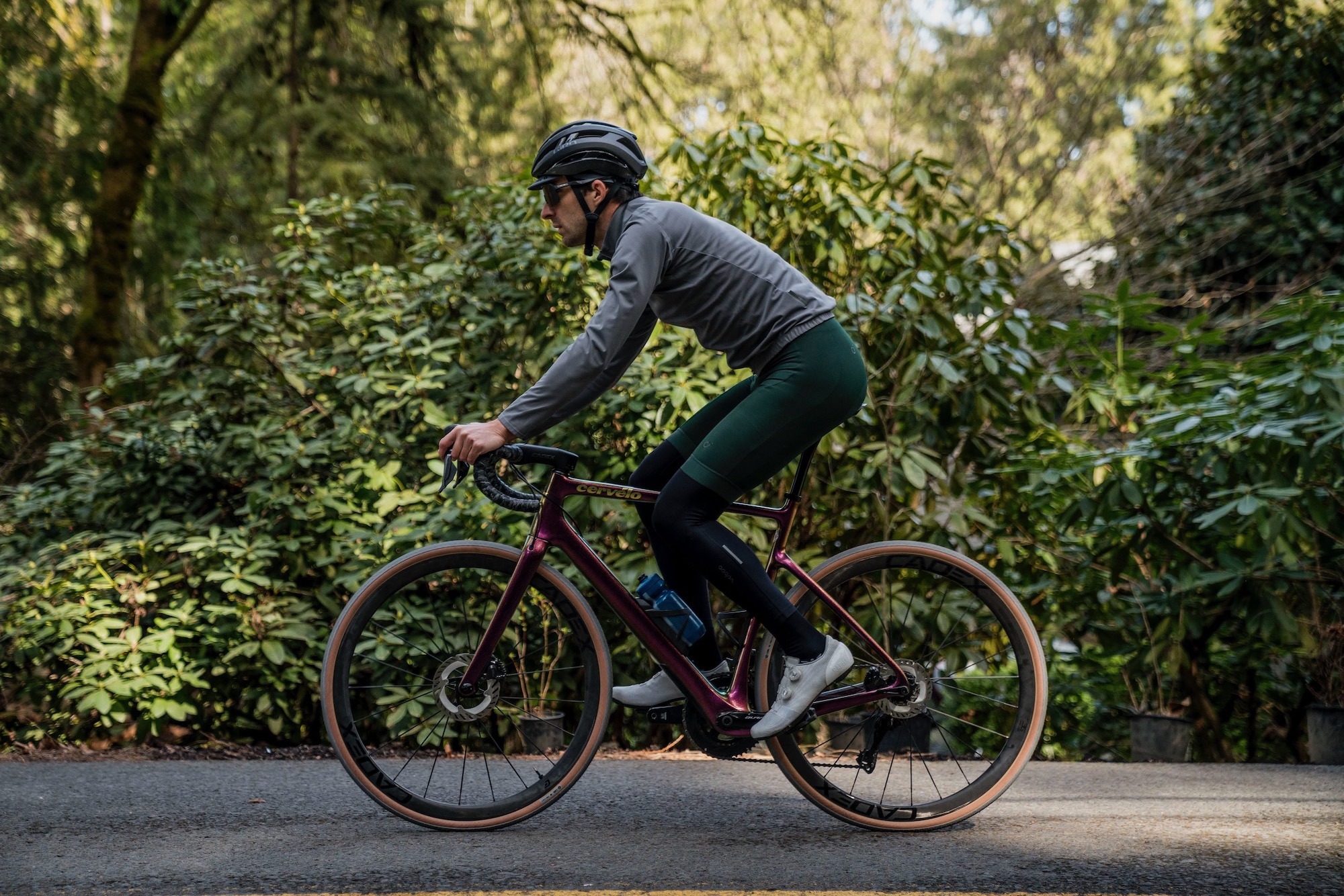
How We Tested the Best Cycling Bibs
To create this buyer’s guide, we systematically tested cycling bibs and compiled notes and impressions. In our search for the best cycling bibs on the market, we rode various bikes in all weather conditions. From sunny singletrack days and 100-mile gravel races to cold and drizzly century rides, these bibs have been through the wringer.
While testing, we paid close attention to a number of different factors, including comfort, breathability, durability, chamois performance, straps, leg grippers, compression levels, and support. We’ve been testing bibs for decades, and it isn’t easy to impress us. The products on this list earned their titles through rigorous scrutiny by experienced and selective cyclists.
Finally, the testing doesn’t stop here. As new bibs hit the market, we’ll strap them on to ensure that our lineup is as fresh as possible and only includes the best of the best.

Buying Guide: How to Choose Cycling Bibs
The big question is, do bib shorts have a place in the drawers of the everyday rider? The answer is yes — and for a few important reasons. Here, we’ll cover the primary factors to consider when searching for your next pair of men’s cycling bibs.
Why You Need Cycling Bibs
The primary consideration and defining trait of cycling bibs is shoulder straps. Straps prevent the shorts from drifting south without relying on waistband tension and keep the chamois in the optimal position while reducing the chances of chafing and bunching. Reducing compression around the gut also allows you to breathe without restriction and can minimize that “gut-bomb” feeling you get after eating and hydrating while riding.
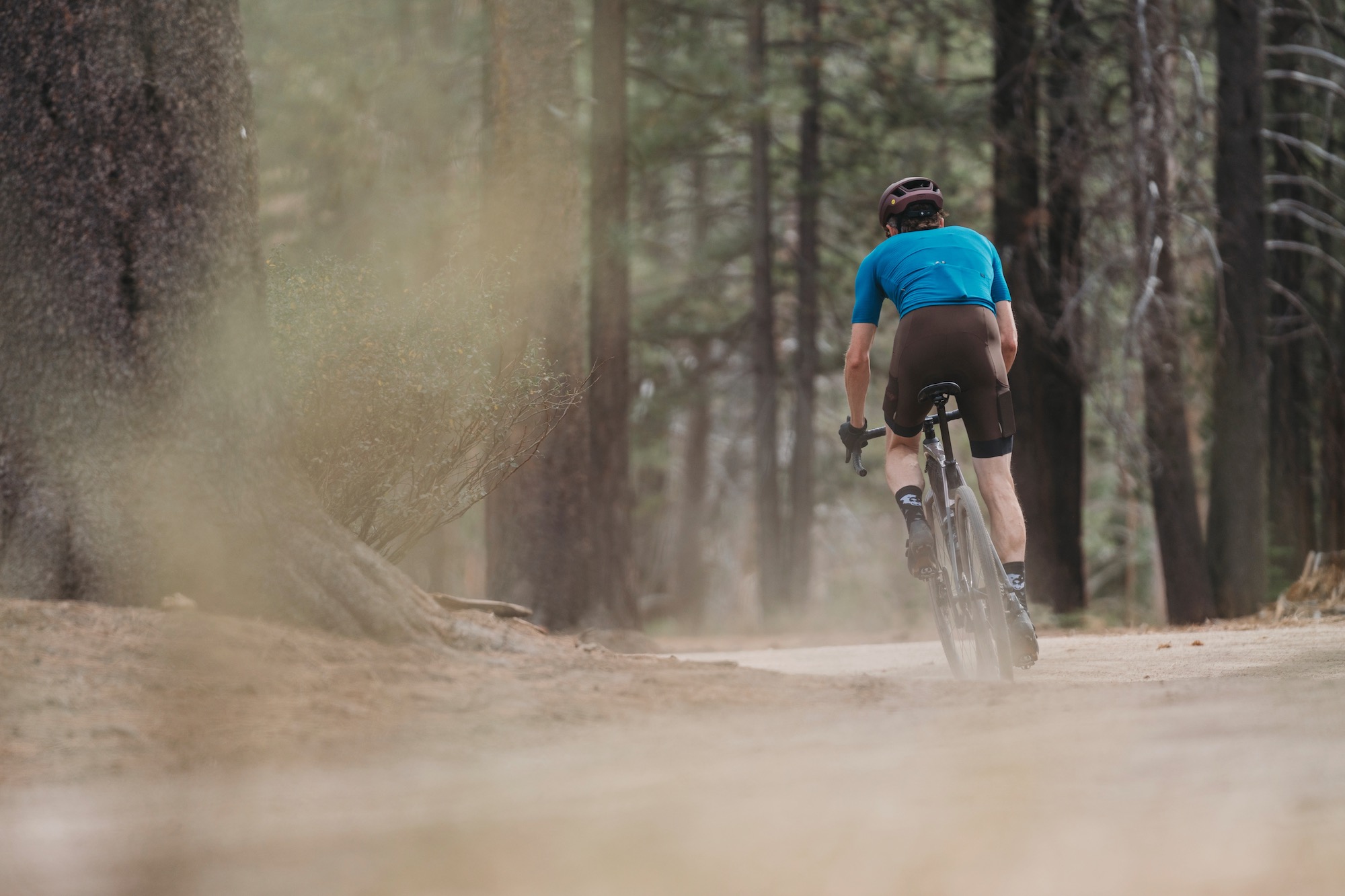
Bibs also cover up any gap between a jersey and shorts. Showing crack isn’t just unsightly — it’s also annoying to have to hike up shorts to readjust the position of the chamois pad, and it’s a terrible place to get an unexpected sunburn. All these are good reasons for considering cycling bibs over traditional cycling shorts.
Speaking of Lycra, yes, it’s “aero” and looks fast. More importantly, many cycling bibs are designed to provide compression, reducing road fatigue by dampening vibrations that can beat muscles into submission. It also prevents any dragging on the saddle and keeps extra material from flapping annoyingly in the wind.
What to Look For in Cycling Bibs
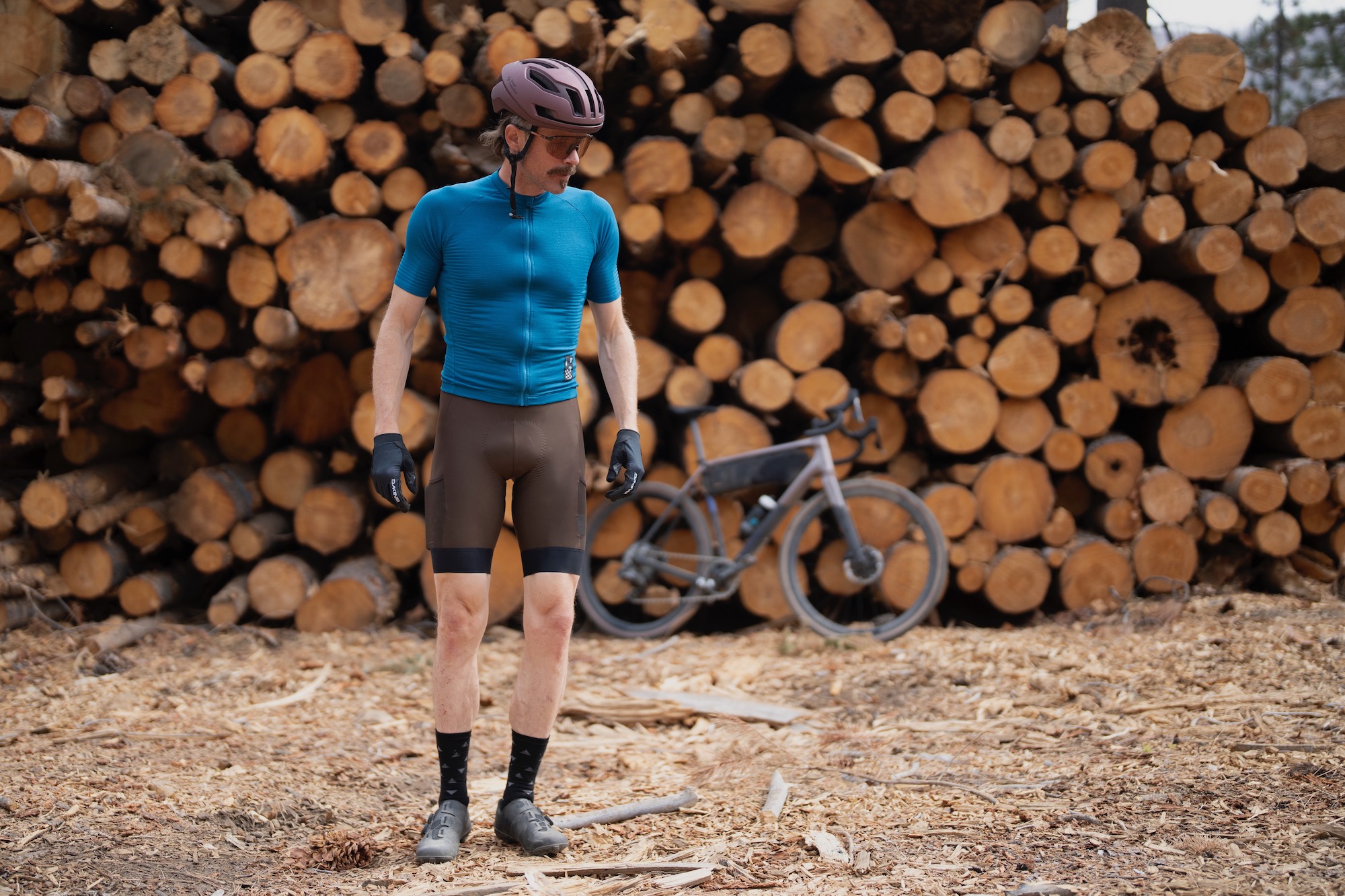
Fit
How a cycling bib fits is highly personal, but there are a few general universal pointers.
First, the vertical dimension must work for your torso length in the riding position. If the bibs are too short vertically, the straps will pull up on the shorts, and you can feel undue pressure in the worst places. Likewise, if the cycling bibs are too long vertically, they may not be effective at keeping the chamois pad in place, and irritating wrinkles and folds in the fabric can form while riding.
Remember, it doesn’t matter how it feels standing up — it matters how it feels in the riding position you will use most, which is usually on the brake hoods — or maybe in the drops if you’re more of a racer.
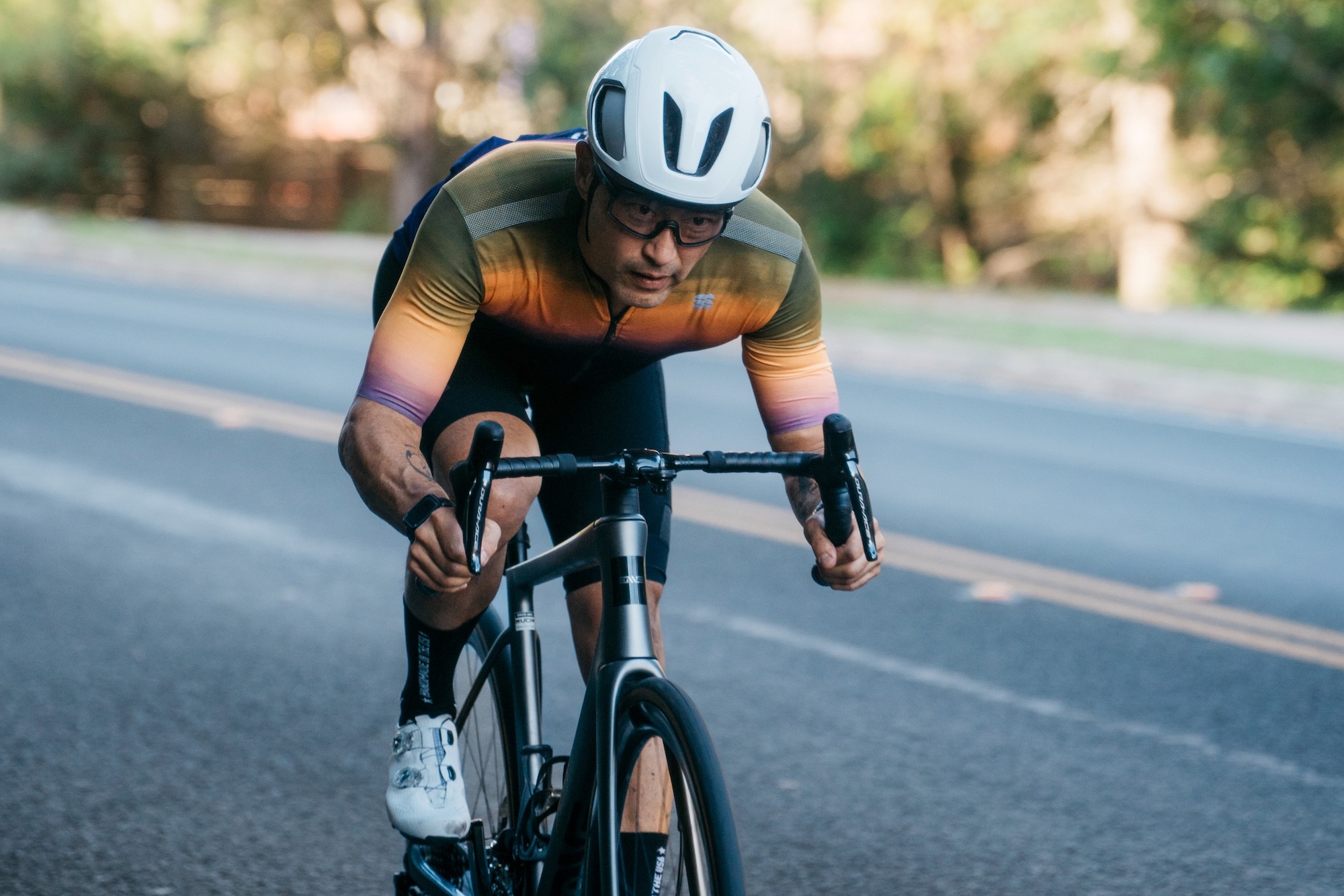
Another factor to consider is the amount of compression you desire. Some cyclists love a super tight, compressive fit, touting that it prevents fatigue and feels better overall, while others are the exact opposite. This also affects the leg grippers — the bottom of the bib legs have to have enough friction (usually from silicone inlays) and tension to stay down, or else they can ride up and cause wrinkles or discomfort.
Finally, the pattern — typically made by paneling the fabric — must match your anatomy for a smooth, aerodynamic, and wrinkle-free fit. If a cycling bib fits perfectly, it will remain stable and wrinkle-free for hours in the cycling position. Accumulated wrinkles do compromise aerodynamics, but more importantly, they can cause irritation in the wrong places.
Areas to look for are in front of the hip joints and around the edges of the chamois. A wrinkle may appear at the hip when that leg comes up in the pedaling motion, but it will disappear when it drops on a good-fitting kit. Some bibs will not wrinkle at all in any position.
Chamois
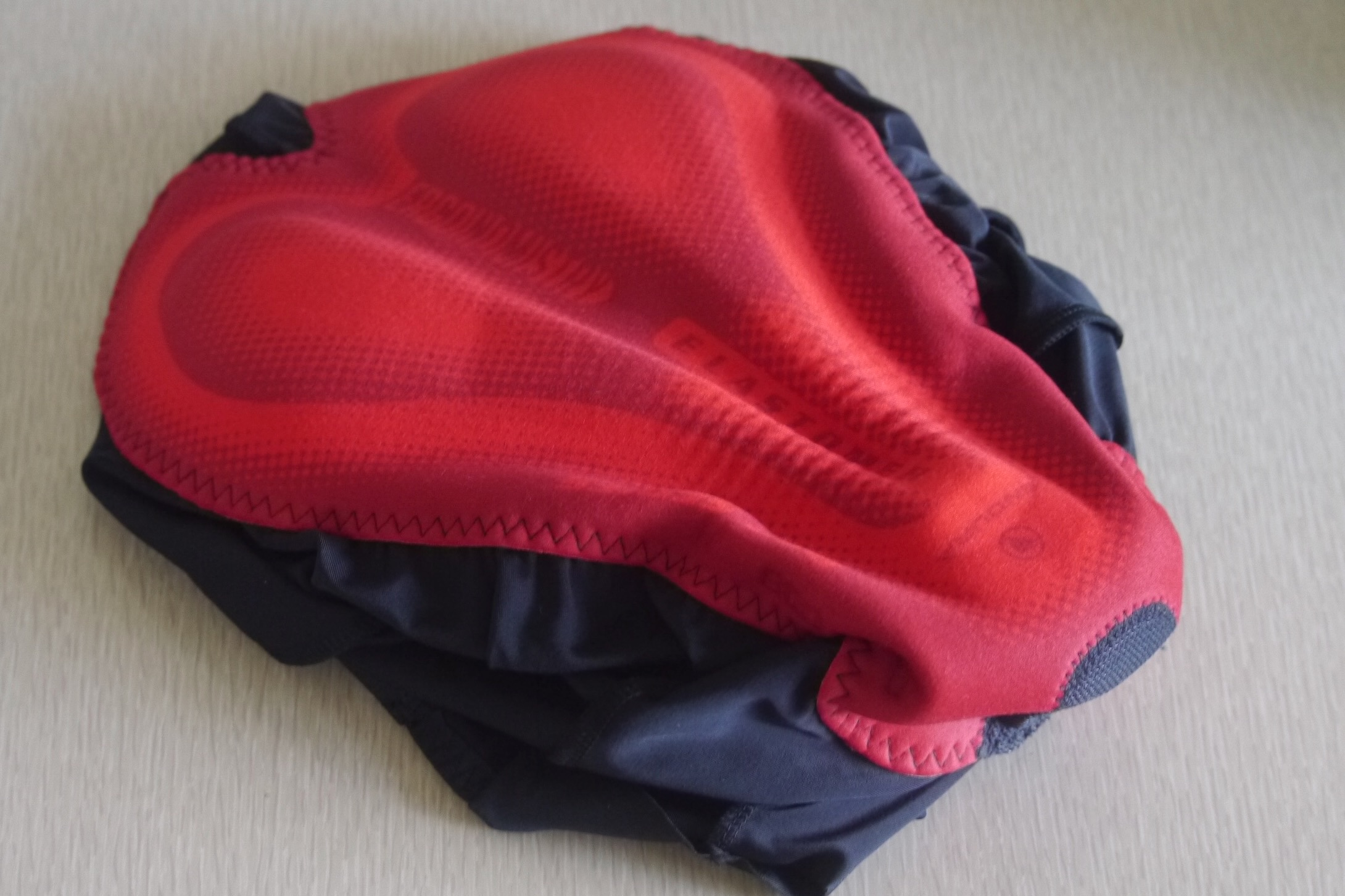
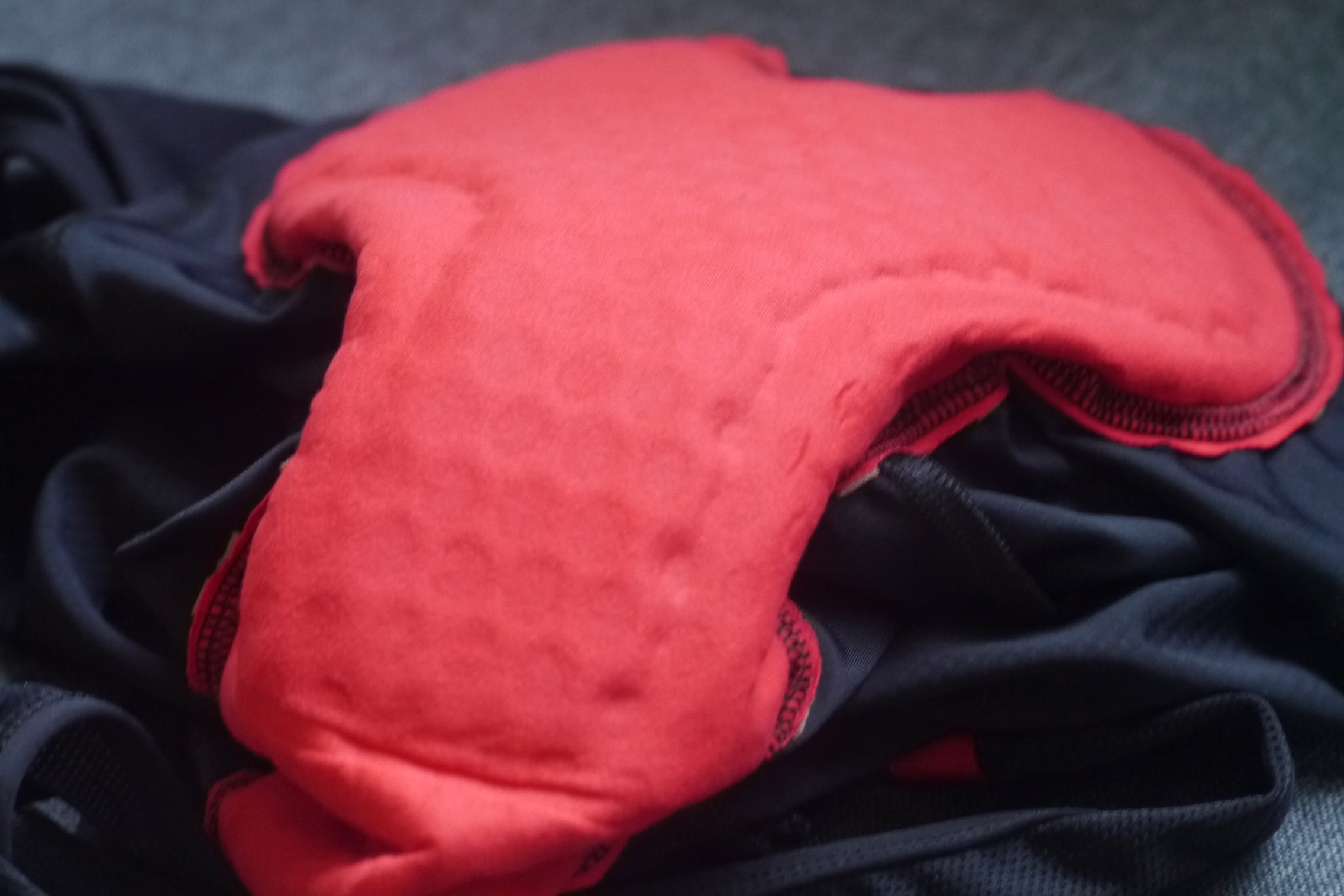
The staffers at GearJunkie have learned the hard way that a good chamois, or seat pad, can make or break a ride. Originally made from leather, today’s chamois have padding made from foams and gels with variable quality, density, thickness, and durability. There’s usually a tradeoff between chamois padding and saddle foam, with the current bias being for more padding in the chamois and less in the bike saddle.
Many premium brands use a third-party chamois that has built an empire entirely around comfort and durability. Brands engineer these pads to reduce bulk, prominent edges, moisture retention, and friction while increasing breathability. All of these reduce irritation and chafing and help manage moisture.
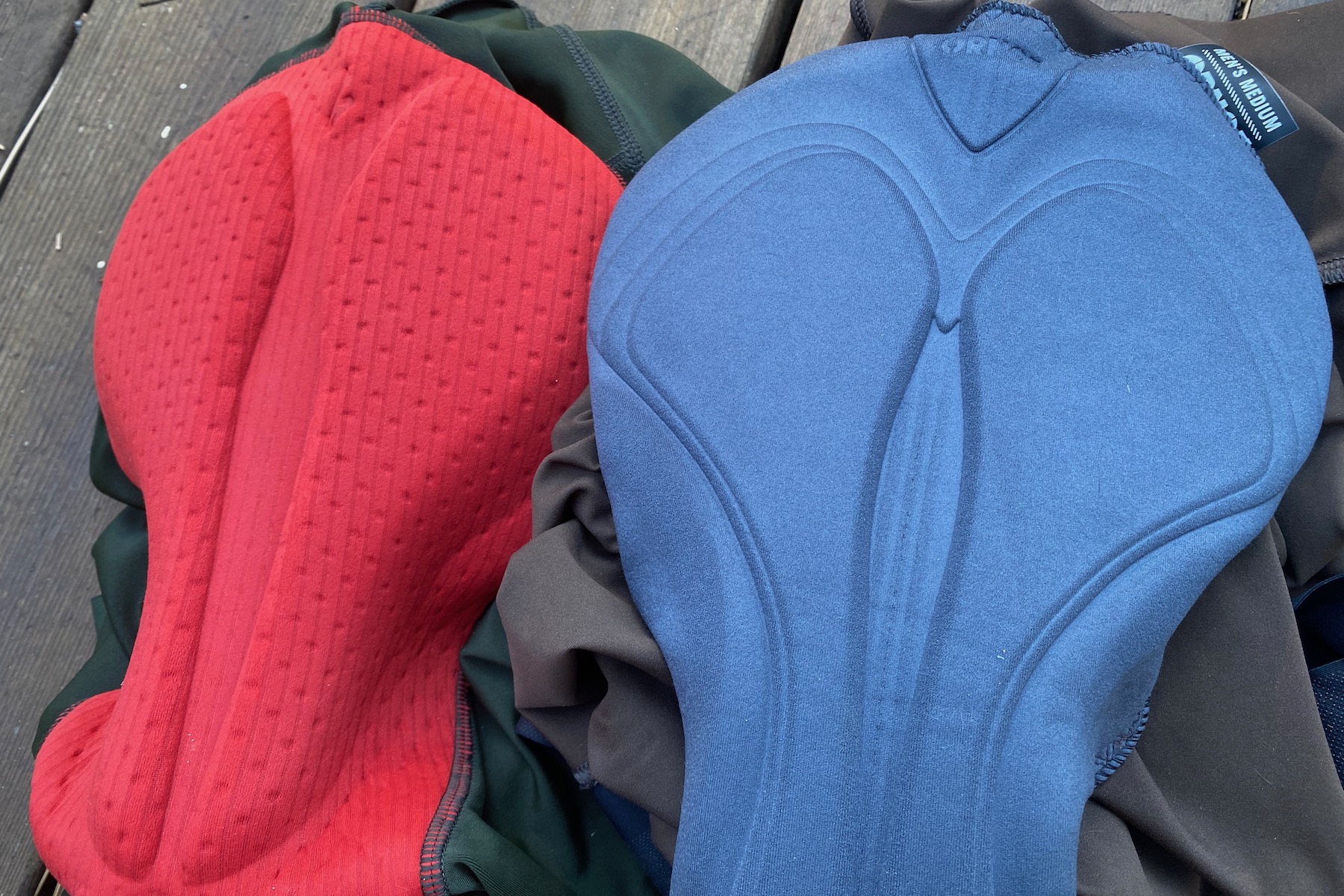
Good seat pads are typically firmer and contoured with subtle creases to wrap the saddle and anatomy without bunching. Most pads are attached to the shorts via zig-zag or flat-lock stitching to further reduce friction and chafing.
Higher-quality padding is engineered from a durable, perforated foam, often with higher-density foams directly under the sit bones. 3D-printing has also finally made its way into seat pads, as evidenced in the stellar pad included in the Gorewear Ultimate Bib Shorts+. This kind of tech usually costs a little more, but you get a longer shelf life. If you plan to ride often, the upfront cost of a great seat pad will pay dividends over the miles.
Companies usually offer different kinds of chamois, or pads, optimized for different kinds of riding. So be sure to evaluate your time in the saddle and buy accordingly. The chamois is the bread and butter of any cycling shorts, from aero bibs to looser-fitting mountain bike shorts. They’re likely where the lion’s share of your coin will go when purchasing a bib short. We’ve found it’s best not to skimp.
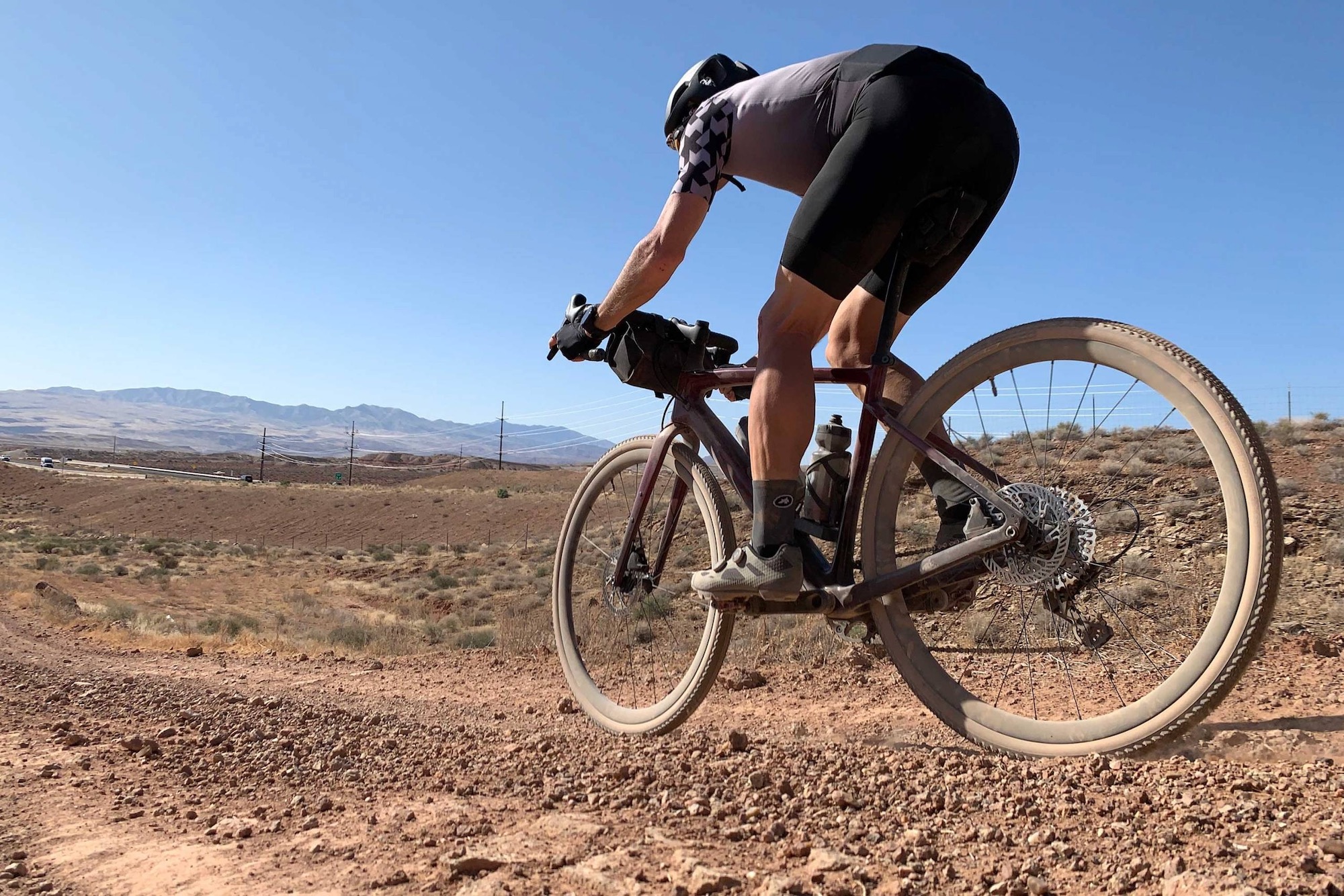
Panels
The anatomy of the human body has an intricate form, with curves and joints that can make obtaining a tailored fit no small feat of engineering. Usually, more panels can wrap around the body with less bunching (which can cause irritable chafing).
Most panels are sewn together with flatlock stitching, which theoretically rides smoothly against the skin. However, many companies still sew panels together with piped overlock stitches.
Bibs are available in thermal, waterproof, and weather-resistant fabrics, and they have enhanced breathability and are suitable for riding in the hottest environments. While most bib shorts will leverage Lycra as the base material, many companies weave proprietary fabrics into it for added breathability and performance benefits. Take time to evaluate when and where you will ride, and buy bib shorts with materials that match the environment.
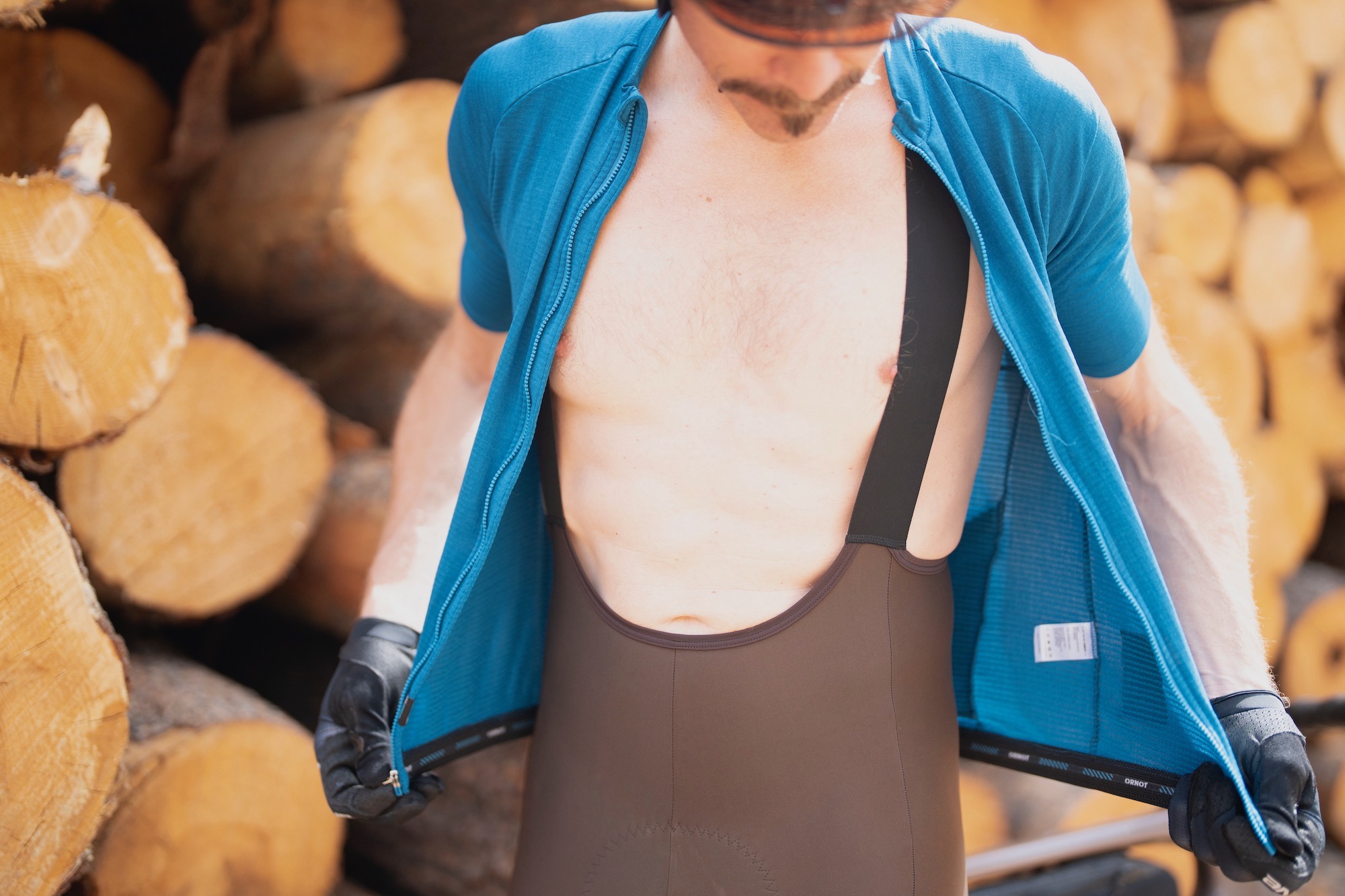
Straps and Leg Grippers
While a chamois is the most important component of bib shorts, straps distinguish a bib from a short and shouldn’t be overlooked. These are often made of mesh, woven material, or other stretch fabrics.
Fashionable piping can finish the strap edges, but we like the feel of laser-cut, raw-edged straps that hold the bibs up without cutting into the shoulders. A good pair will have a yoke that eases around the belly and incorporates a breathable upper that allows the wind to whisk away heat.
Bib straps should balance stretch and tension to keep the shorts in place while still allowing for freedom of movement for the full range of cycling body positions. Getting the right size bibs to suit your torso length is an important factor in this equation, as that will certainly impact the way a bib’s straps interact with your body and dynamic movements on the bike.
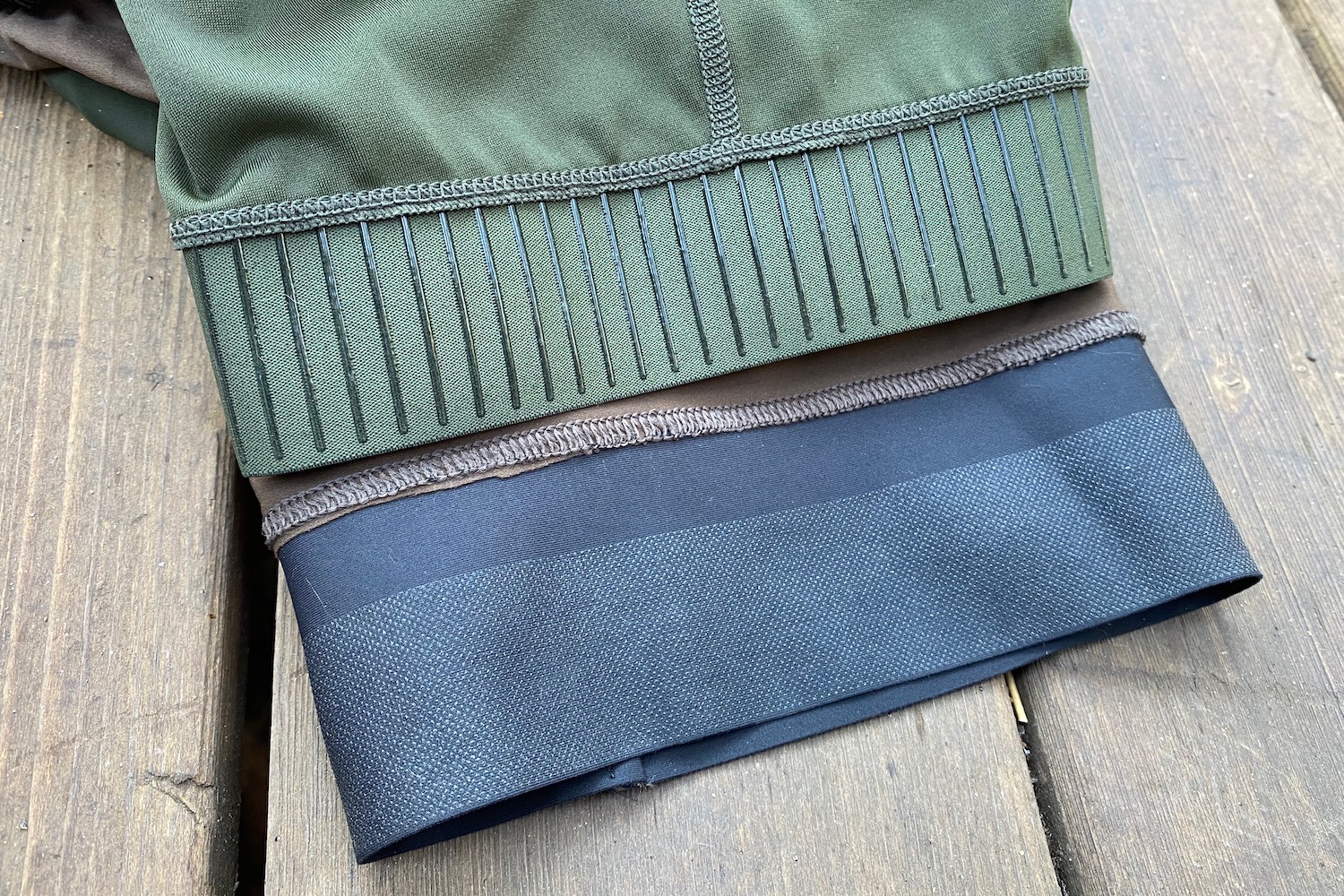
Similar to the straps, the leg grippers help keep the shorts locked to the legs. Many bibs will often have gummy silicone dots or strips at the leg openings to grip the skin and keep them from riding up or twisting.
High-end brands are shifting from tight bands at the bottom of the legs to larger panels that expand the compression down the leg a few inches. We’ve found this provides compression without constriction and feels more natural on tired legs.
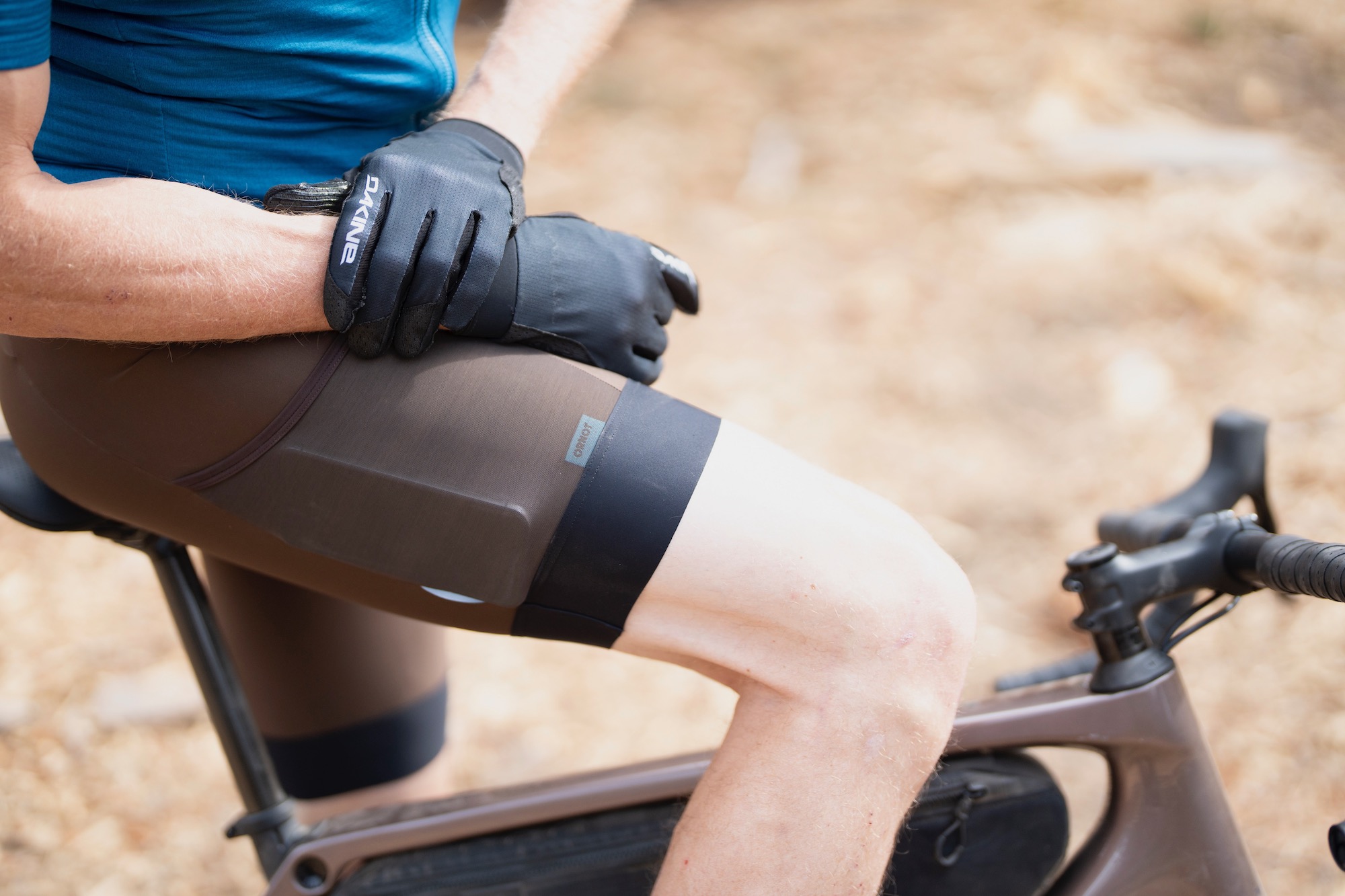
Cargo Pockets
These days, many brands offer cycling bibs with cargo pockets. These typically involve stretchy mesh pockets on each thigh, and many models also include mesh pockets on the lower back as well. These pockets provide more on-body storage and easy access to items like a phone or snacks while riding.
This makes it easier and more convenient to carry more with you on rides. Plus, it is typically much easier to pull your phone out of a thigh pocket while rolling than it is to reach back into your jersey pocket every time you want to snap a picture or check the map.
While traditional jerseys generally offer ample storage for most people’s needs, looser-fitting cycling tops are quite popular among many riders these days. These types of jerseys often don’t have rear pockets, so the addition of lower-back cargo pockets on cycling bibs can replace that lack of storage. Cargo bibs seem to be most popular among gravel, adventure, and long-distance riders.
We’ve tested several cargo-carrying cycling bibs, including the Ornot Cargo Bibs, POC Cadence Cargo, and the Pearl Izumi Expedition PRO.

Price & Value
Like anything else in cycling, bib shorts come in a wide range of prices — $80 to $380 among the models we tested. Since they all aim to perform roughly the same function, it makes you wonder what sets the budget-friendly models apart from the premium options and what the differences are.
Budget
If you’re new to the sport or simply don’t have a lot of money to spend on fancy Lycra cycling gear, there are quite a few quality options at the lower end of the price spectrum — between roughly $80 and $150. Generally speaking, budget-friendly cycling bibs have improved dramatically in recent years as materials, design, construction, and even chamois pads have evolved and trickled down. The affordable bibs of today or often as good or better than the high-end bibs of a decade ago, even if they can’t compete with today’s premium options.
Take the Pearl Izumi Quest ($80), for example. These are the least expensive model we tested, but they still perform admirably and dutifully on any ride with a comfortable chamois, straps, and wicking materials. They aren’t the most compressive or the most stylish, but they absolutely get the job done at a fraction of the price.
The Specialized Foundation Bibs ($130) bring plenty of style and a stable fit, but, again, aren’t the most compressive except for the high-tension leg grippers. There are plenty of other options in this price range, and we’ll be testing more in the near future.
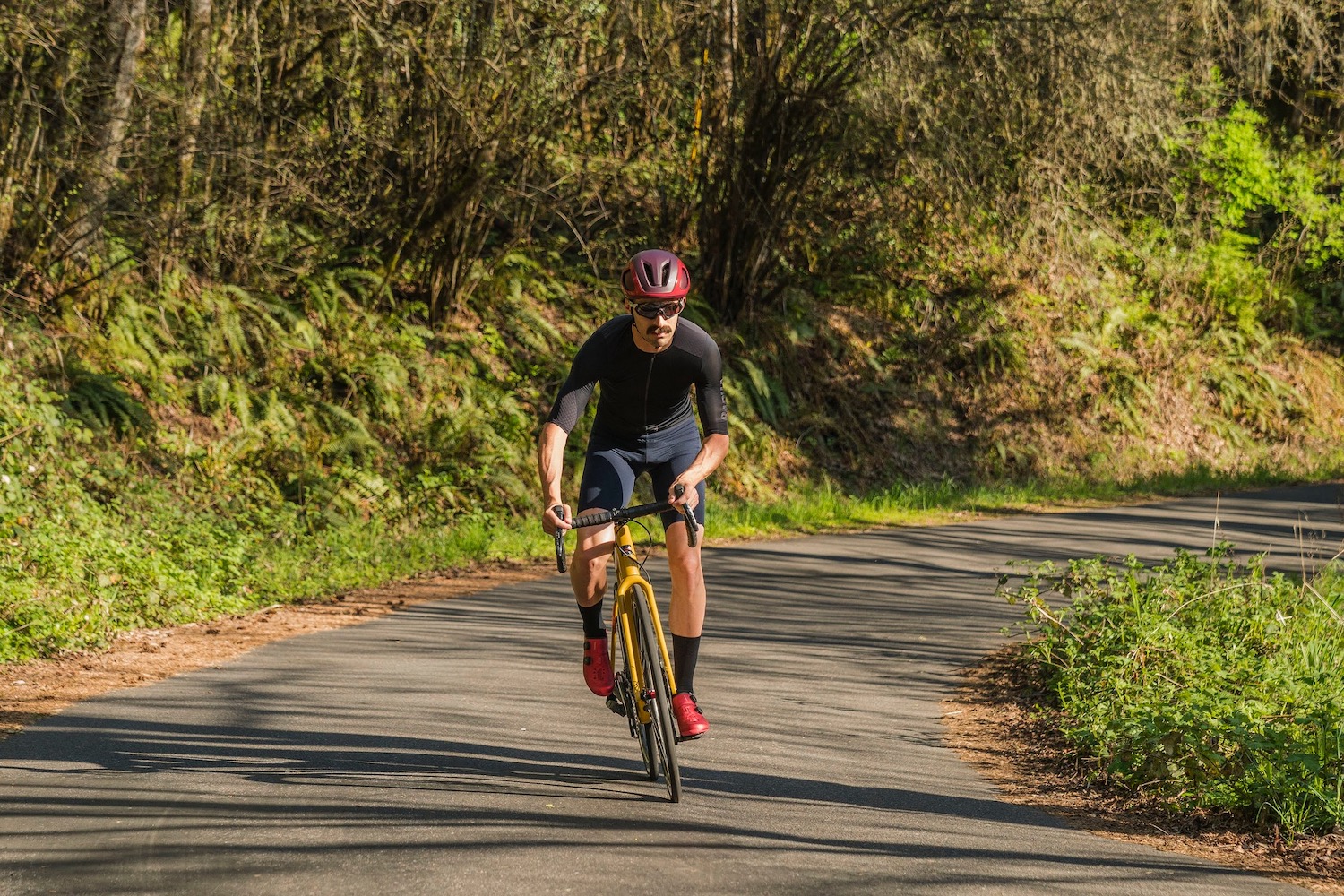
Mid-Tier
In the middle of the price spectrum, roughly $175-275, most riders will find the sweet spot in the price-to-performance ratio. Here, brands use fancier and more luxurious materials, higher-quality seat pads/chamois, more advanced paneling, and sleeker, more comfortable leg grippers and straps. Often, the use case may be more specific — racing, endurance, etc., or they may include features like cargo pockets.
In many cases, it can be hard to tell the difference between the mid-tier and premium options in either performance or appearance. Take the Giro Chrono Elite Bibs ($200), for example. Made from recycled material and featuring laser-cut leg grippers and straps, these bibs keep their super comfortable chamois positioned perfectly on any length of ride. They also happen to look great, which begs the question, why spend more?
A little higher up in this price range, the Ornot Cargo Bibs ($218) have a killer fit, comfortable materials, and cargo pockets to keep essentials in arm’s reach. The pad is comfy for all-day rides, which is good because you’ll be able to carry plenty of food in those cargo pockets.
Premium
Once you break the $275 threshold, we enter the high-end of the cycling bibs market. Believe it or not, there are bibs that exceed the $400 mark. Up here in the price stratosphere, bibs are almost always riding style or conditions specific, with different chamois pad types, super advanced materials, seamless leg grippers, or promises of marginal aerodynamic gains.
A recent standout is the Gorewear Ultimate Bibs Shorts+ ($280), which have one of the best seat pads we’ve ever tried. Featuring a 3D-printed insert sandwiched between bio-based foam, this pad provides outstanding cushioning and support, along with excellent breathability and moisture management, for supreme comfort no matter how long you ride.
The Rapha Pro Team Powerweave ($380) are the most expensive bibs we tested. This is due partly to the Rapha brand name but also to the highly technical material and construction of the shorts. The unique Powerweave material magically combines an impressively light weight and excellent breathability with great compression and muscular support — not to mention a stellar chamois.
Frequently Asked Questions
First, you need a cycling bib that offers maximum comfort. While a good chamois costs more, it will pay dividends down the line. It will feel better and probably last longer.
Next, you’ll want to consider your riding conditions. For hot weather, look for breathable materials, and you may even want a few mesh panels. For cooler conditions, consider models that have beefier, insulated, or wind/weather-resistant fabrics.
The straps and leg grippers also affect a bib’s comfort and performance. These elements help keep the bibs in place even on long rides. Our testers find that the laser-cut, raw-edged straps offer the best all-day comfort. For leg grippers, we look for silicone on the inside of extended panels at the bottom of the legs.
It’s also important to consider your riding style and duration. Different riding styles and body positions may benefit from chamois pads or compression levels and more specific designs to meet the varying demands. If you’re heading out on all-day rides or into off-the-beaten-path terrain, you may want to consider cargo bibs. Cargo bibs have external pockets that add storage and keep essentials easily accessible while you ride.
Choosing between bike shorts and bibs ultimately comes down to personal preference. But, the vast majority of serious cyclists prefer bibs for several reasons.
The main differentiator between bibs and shorts is the shoulder straps. While shorts rely on tension at the waist to keep them in place, bib straps add tension over the shoulders to keep the shorts and chamois in the optimal position on the bike.
The straps keep the shorts from riding down and ensure the chamois remains in positioned between you and your saddle to be most effective. Properly fitting cycling bibs are unrestrictive, and the lack of waistband pressure is more comfortable and allows you to breathe more easily.
It may sound trivial, but bibs also rise higher in the rear and prevent any gap between your jersey and shorts. Not only can this be unsightly, but it isn’t ideal to expose this part of your body to the sun or road spray.
As mentioned earlier, bibs reduce bunching and unwanted gapping between a jersey and shorts. They also reduce compression around the waist, allowing for a more comfortable ride while leaning forward on the bike. If you’re hesitant to wear Lycra, check out our bike shorts Q&A for even more compelling reasons to pick up a pair of stretchy shorts for riding
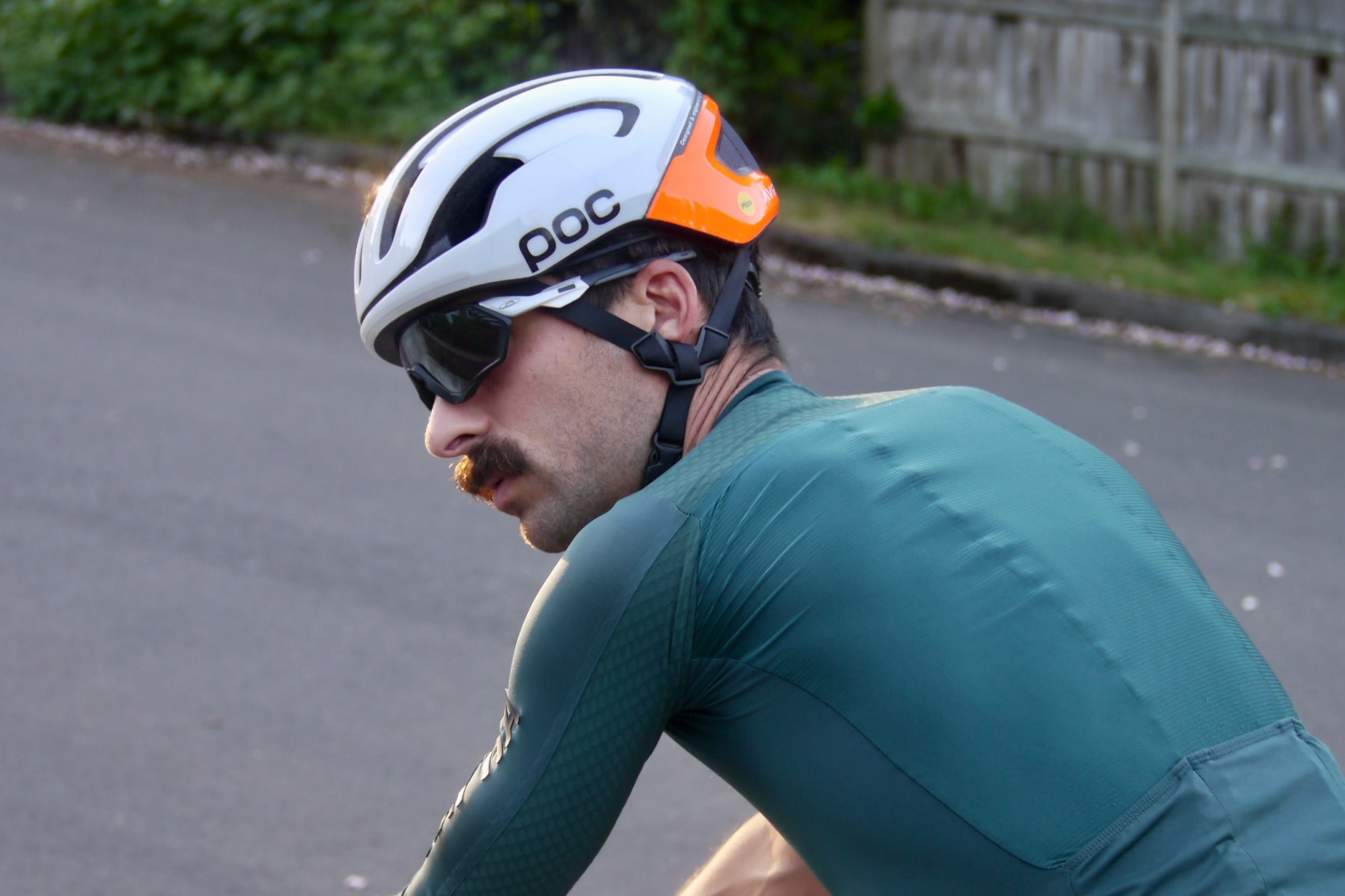
The Best Road Bike Helmets of 2025-2026
We tested 16 models from top brands, including Giro, Specialized, Lazer, and more, to find the best road bike helmets.

The Best Road Bike Saddles of 2024
We tested road bike saddles of 2024 from top brands like Specialized, Fizik, Ergon, Bontrager, and more to find the best.
